
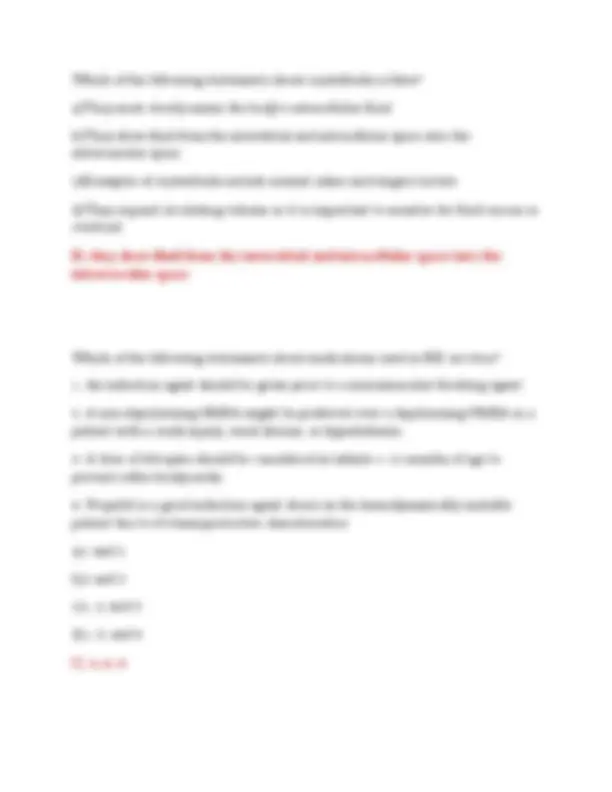
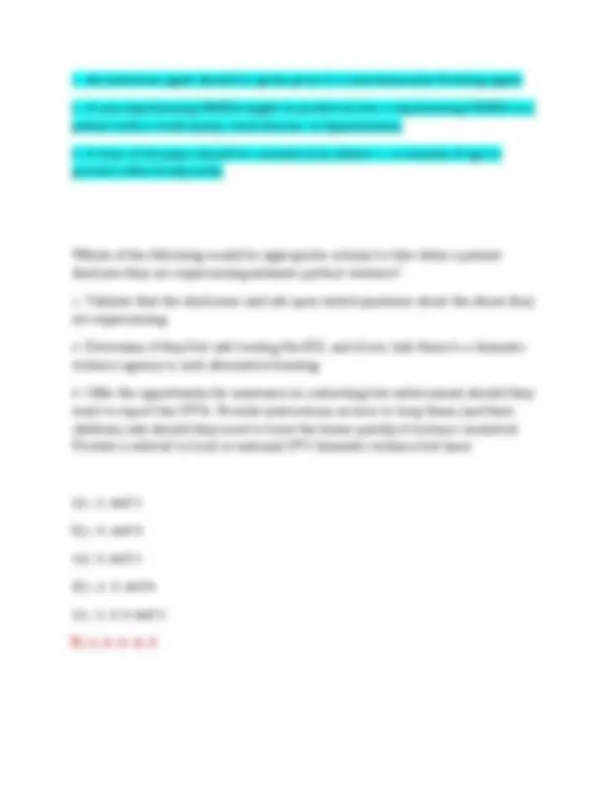
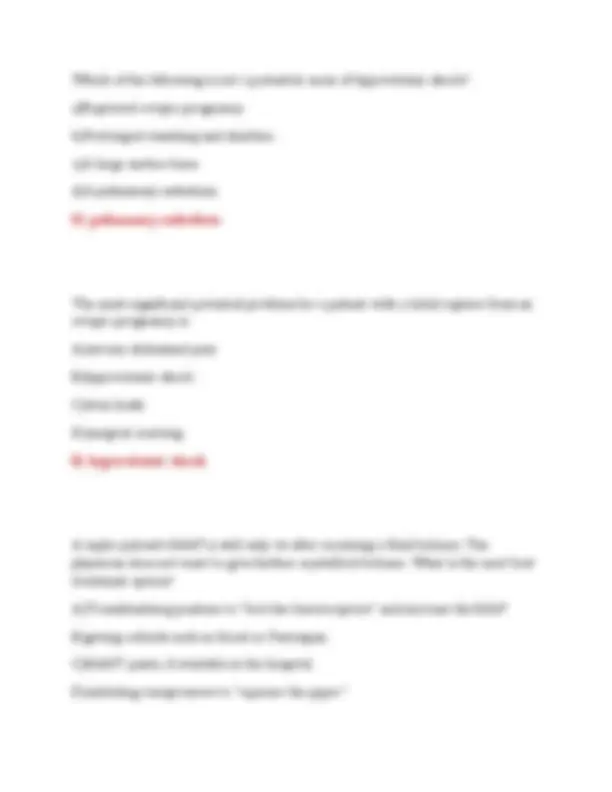
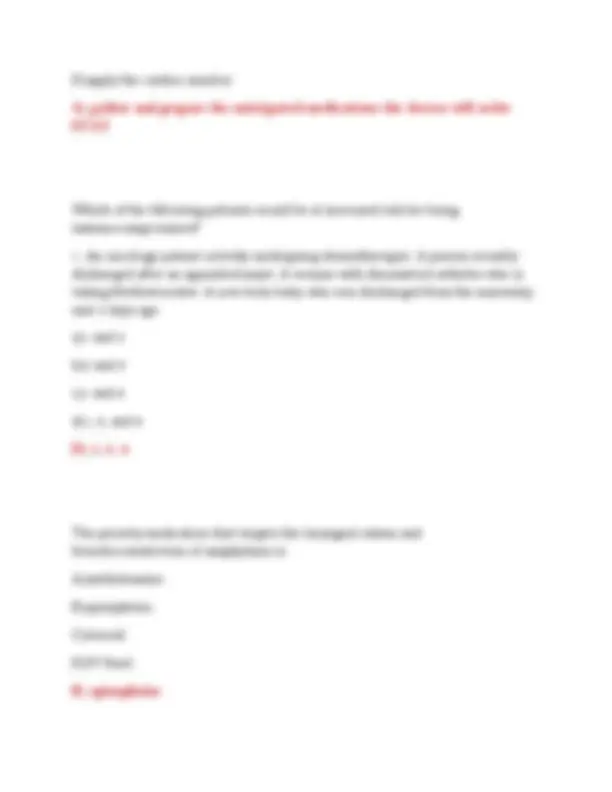
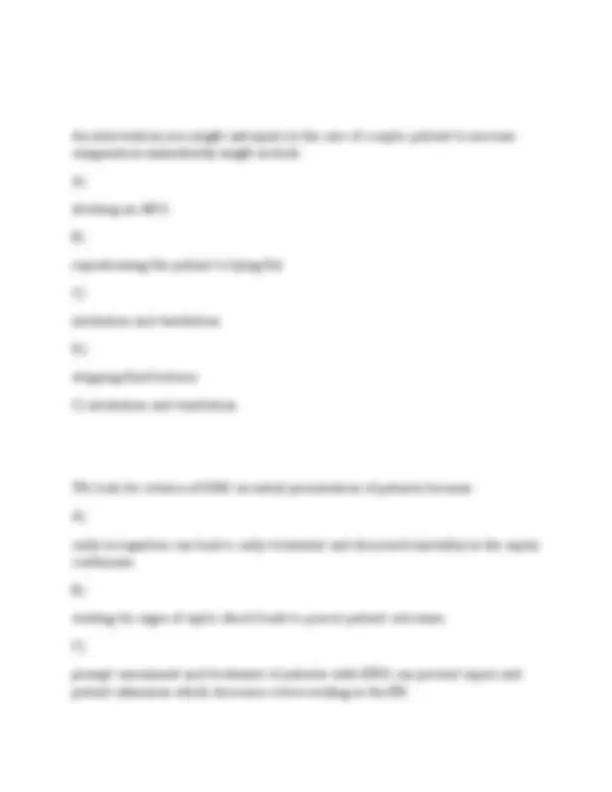
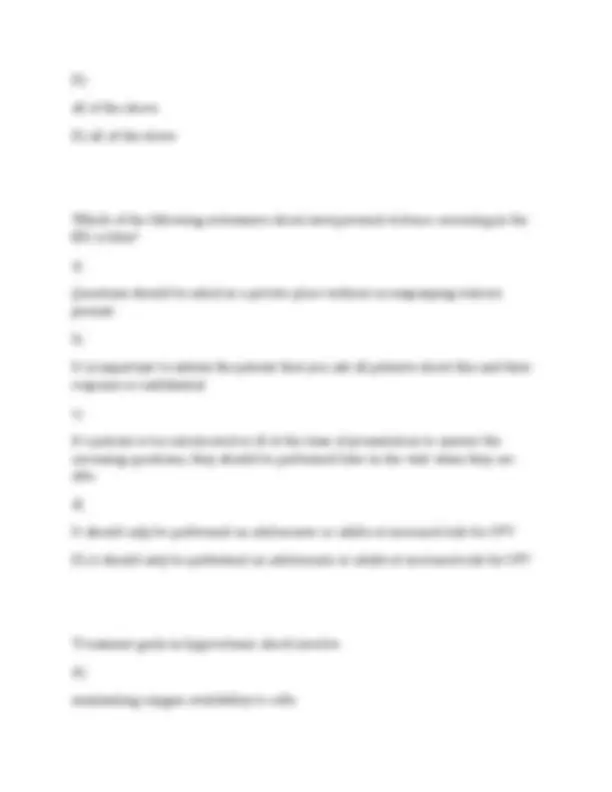
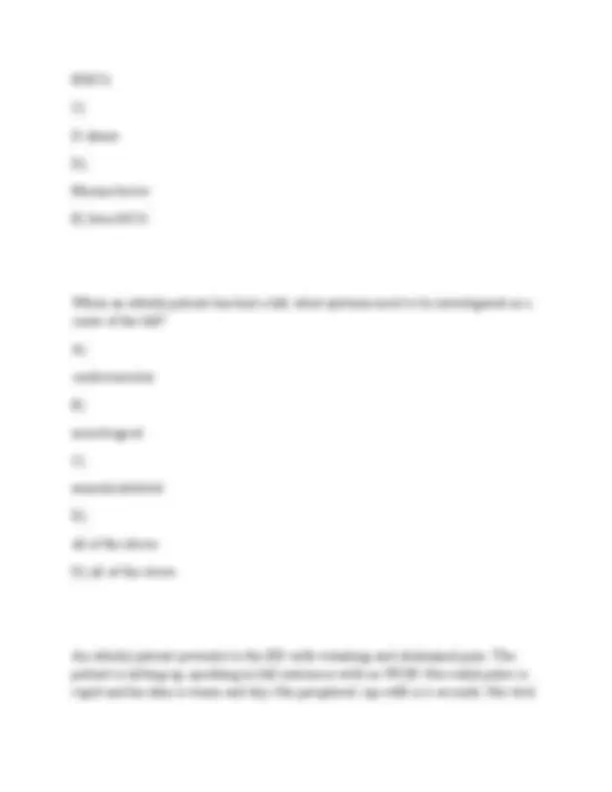
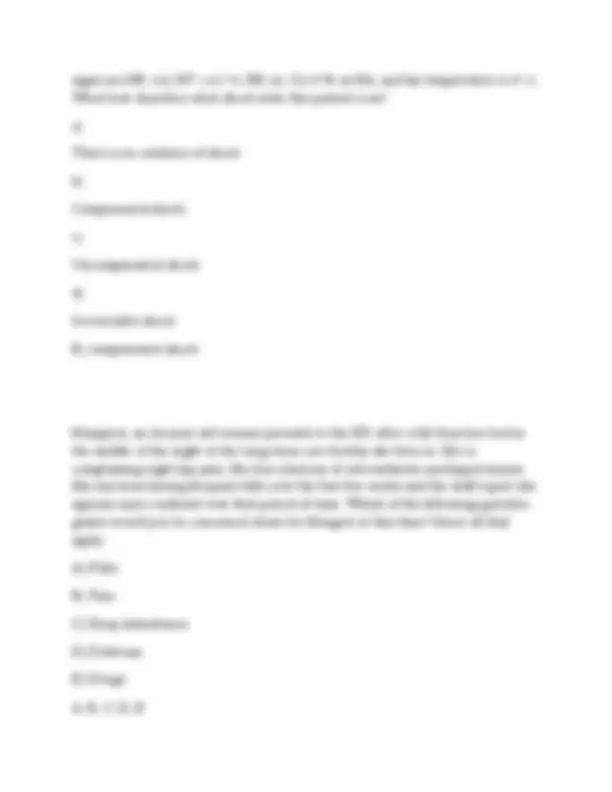
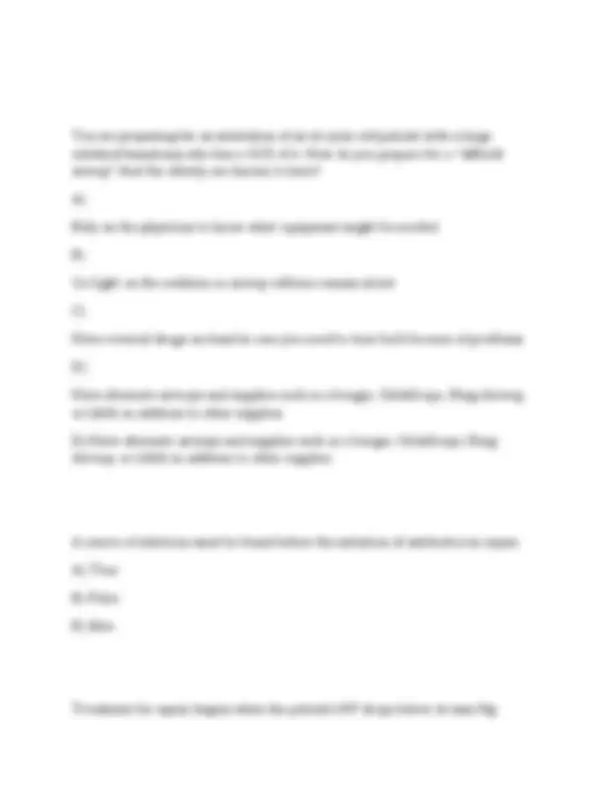
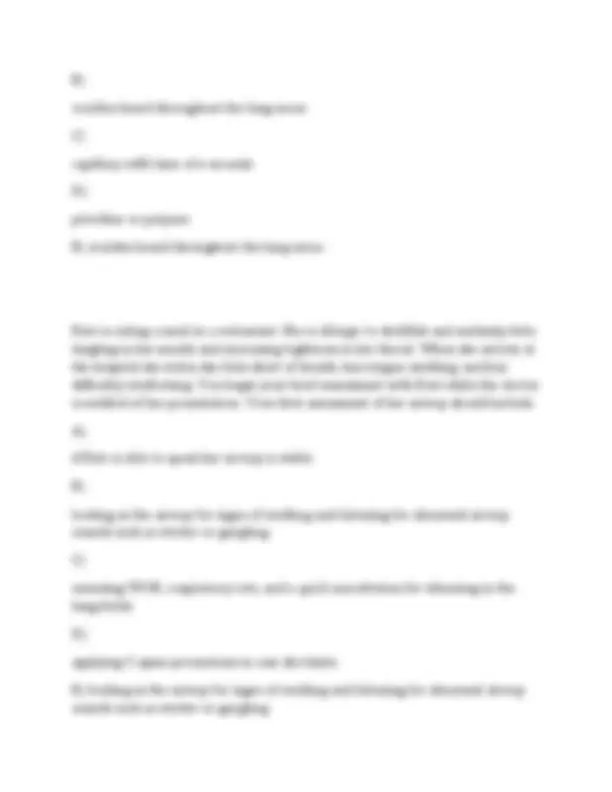
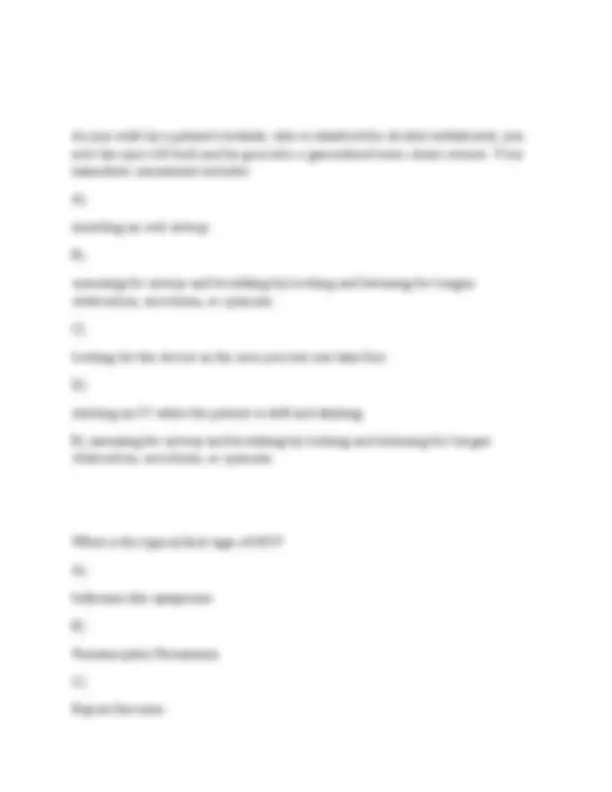
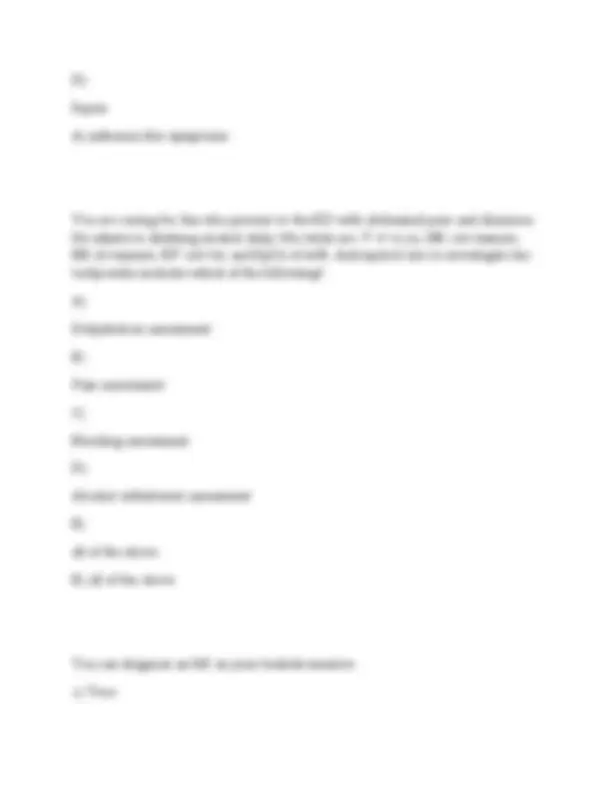
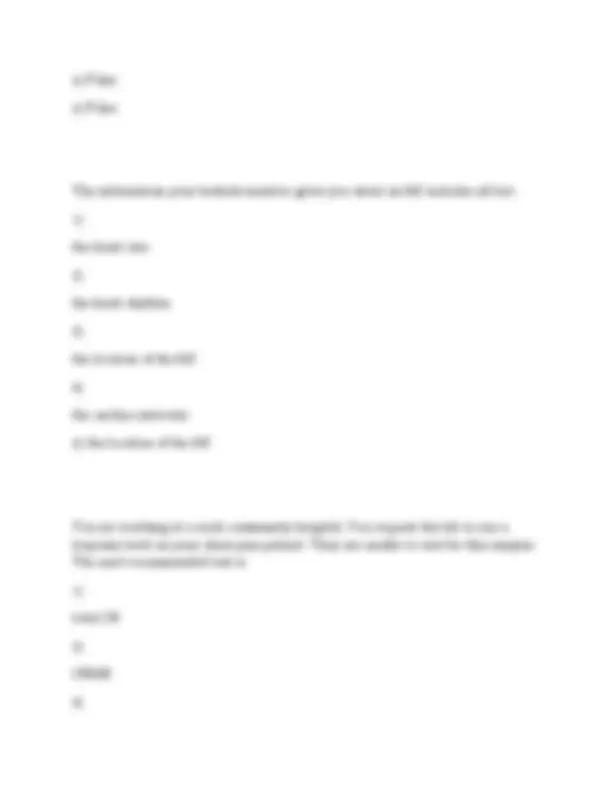
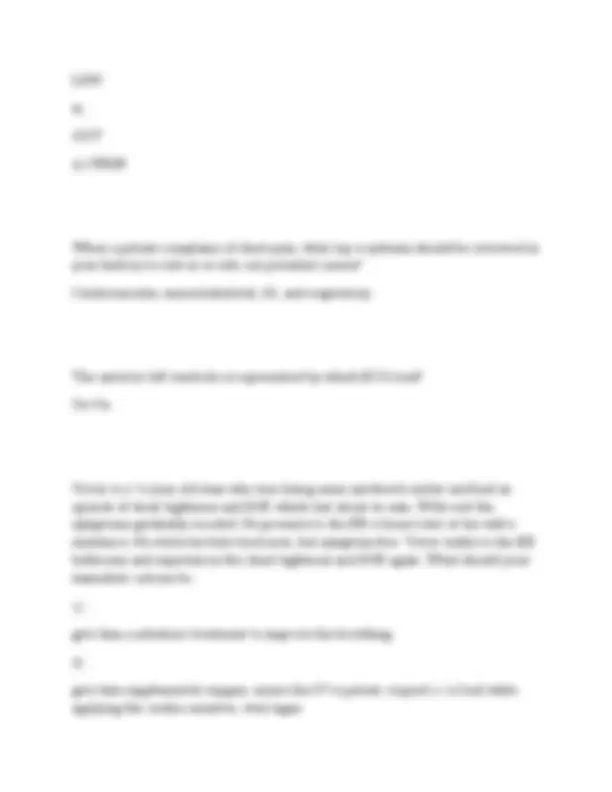
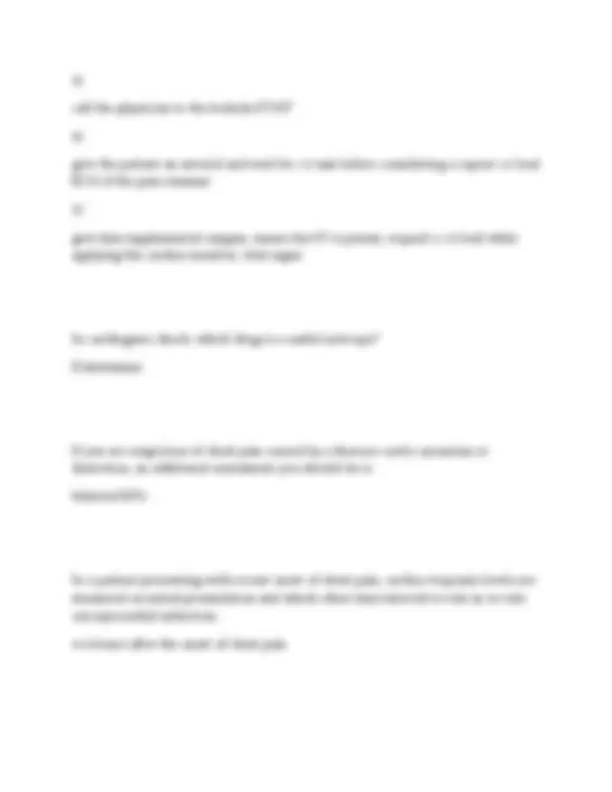
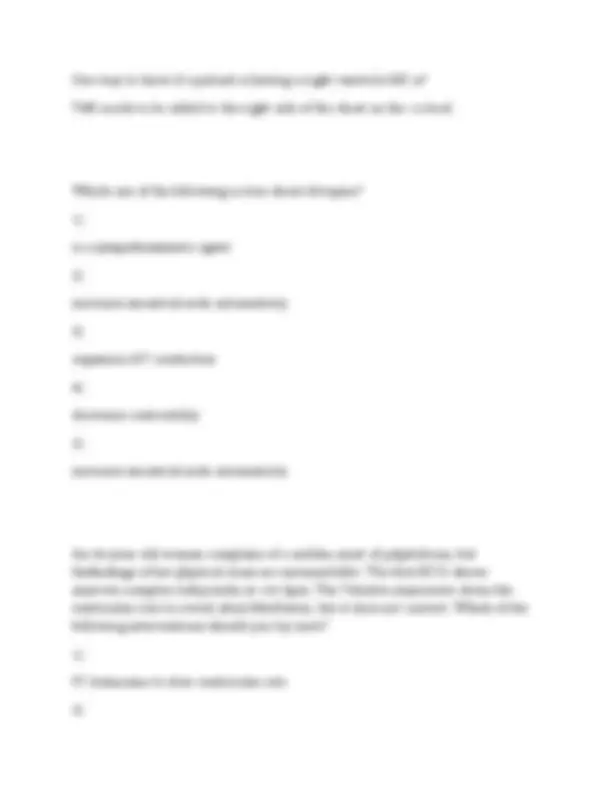
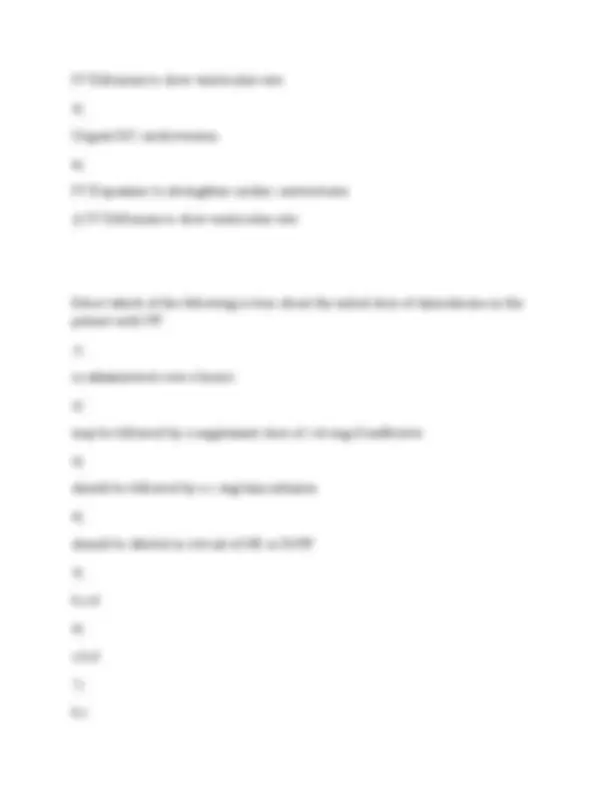
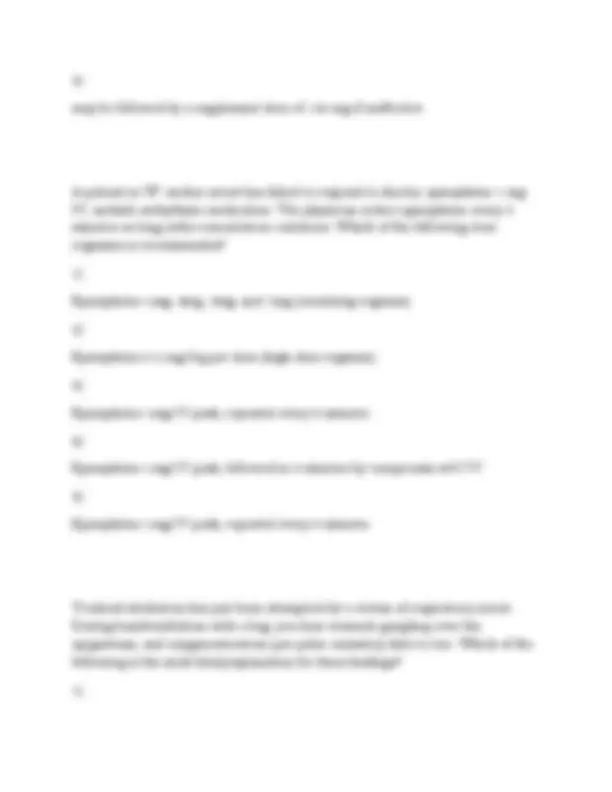
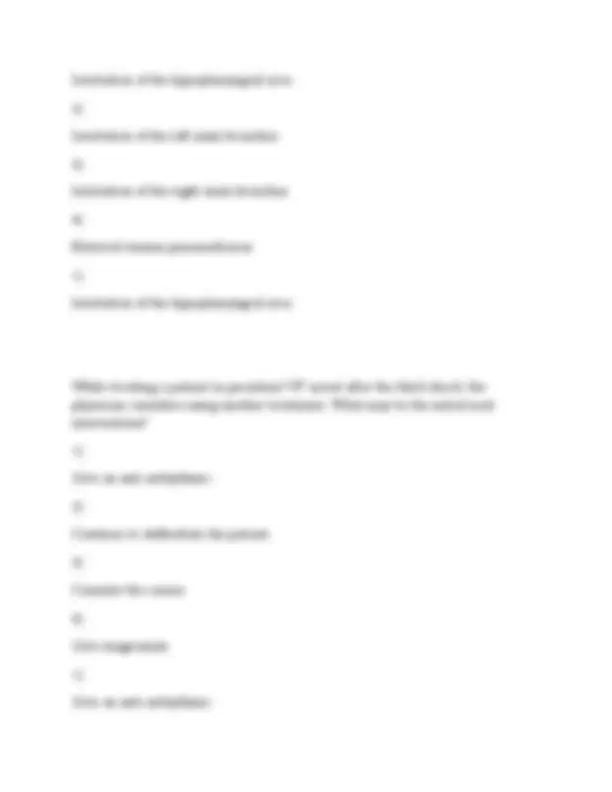
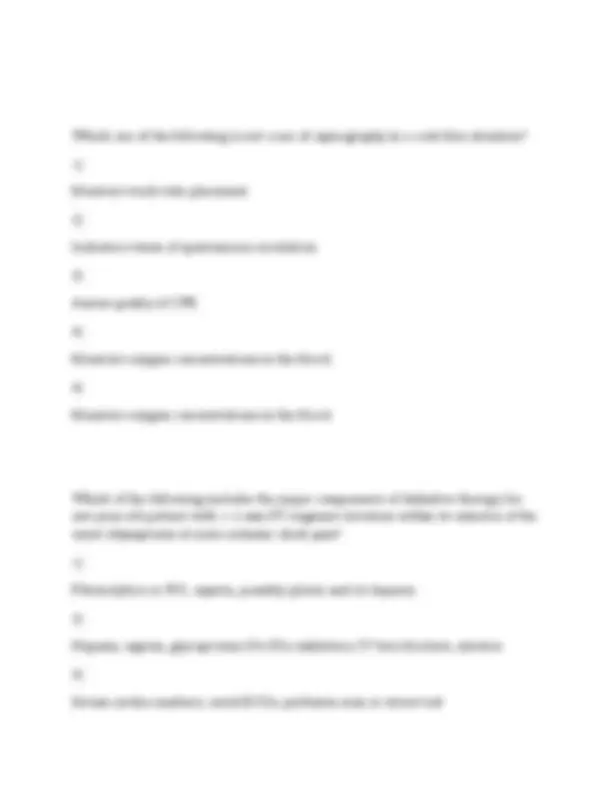
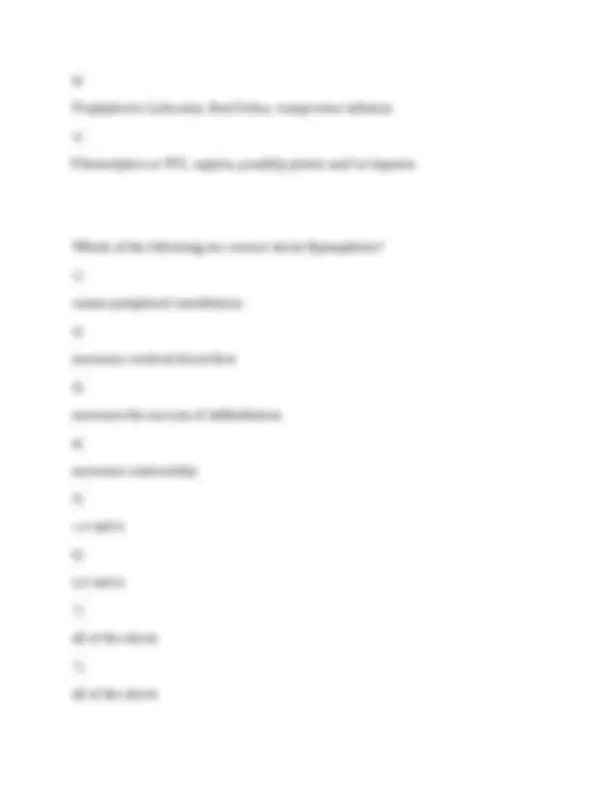
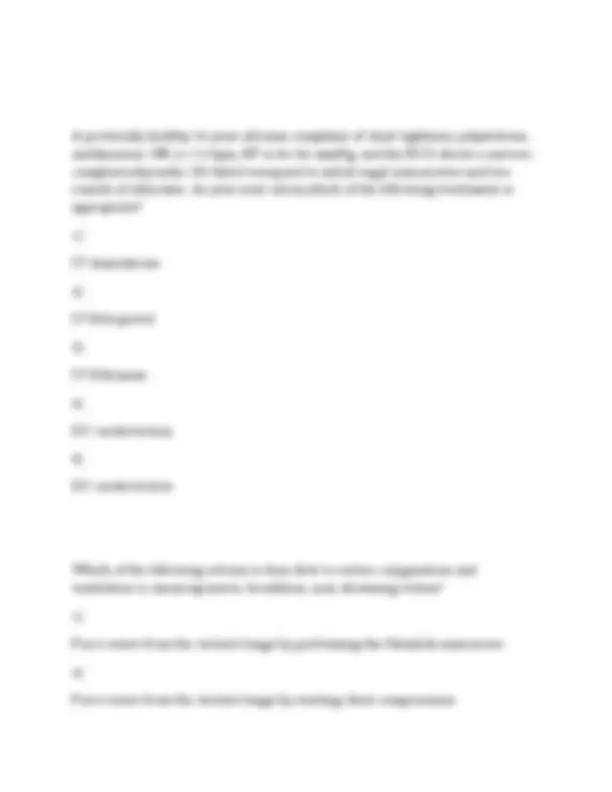
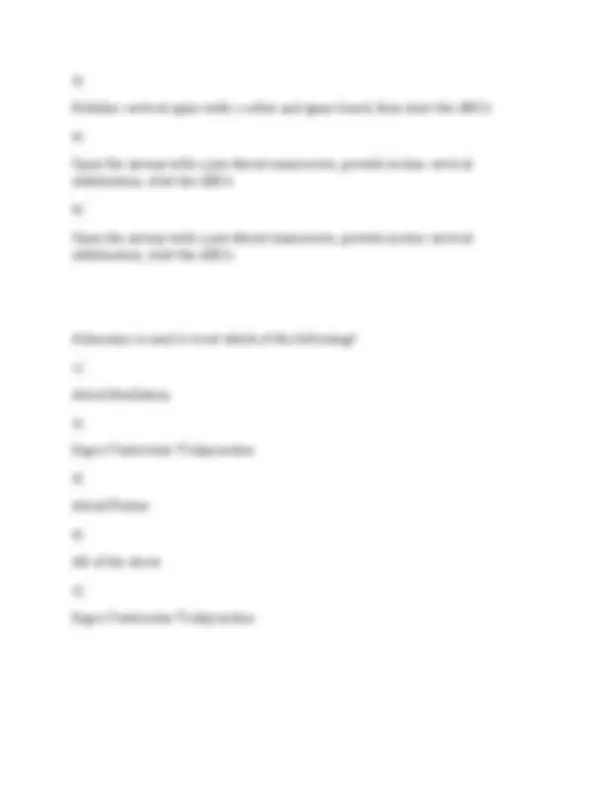
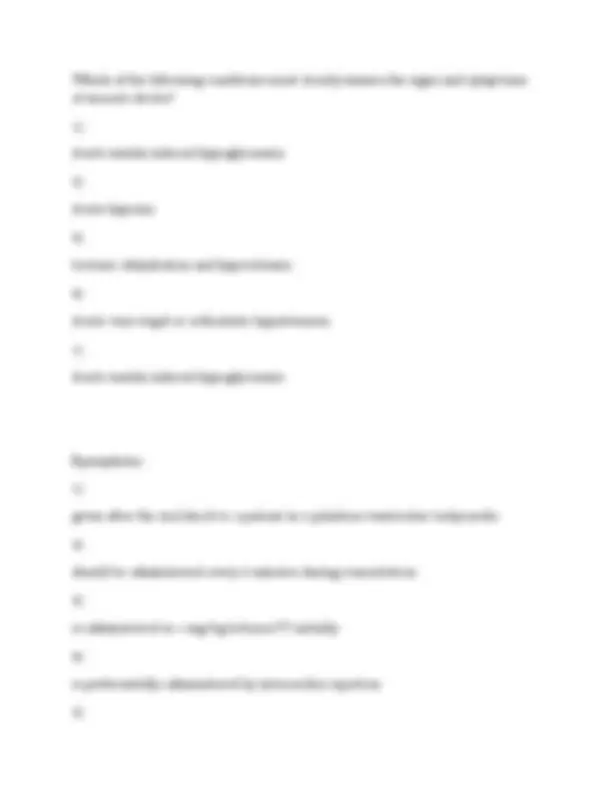
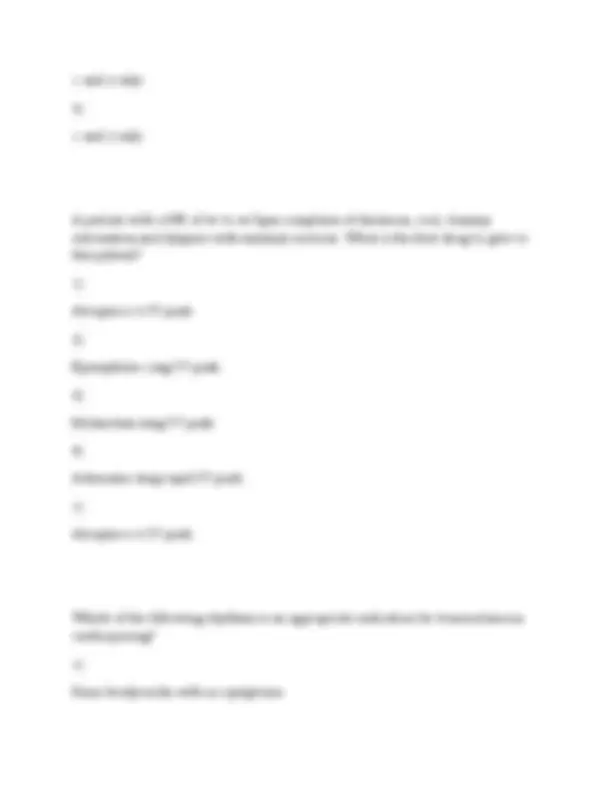
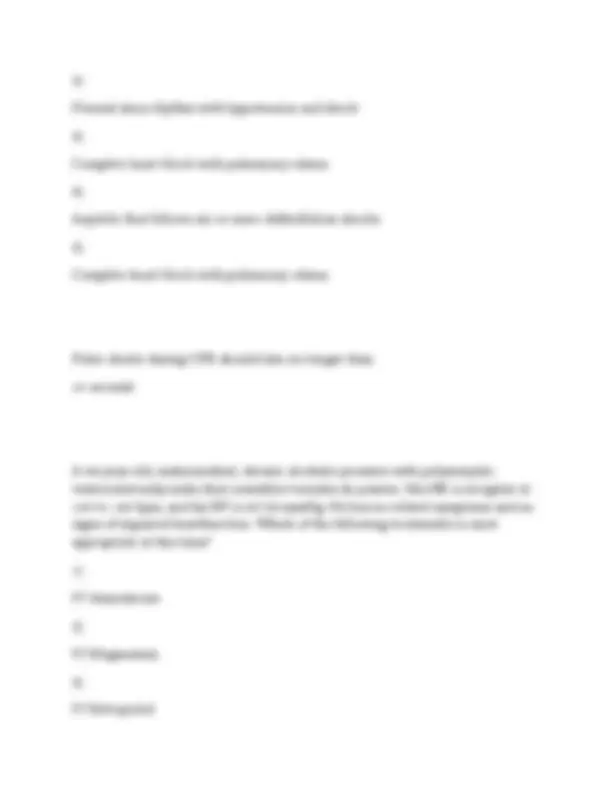
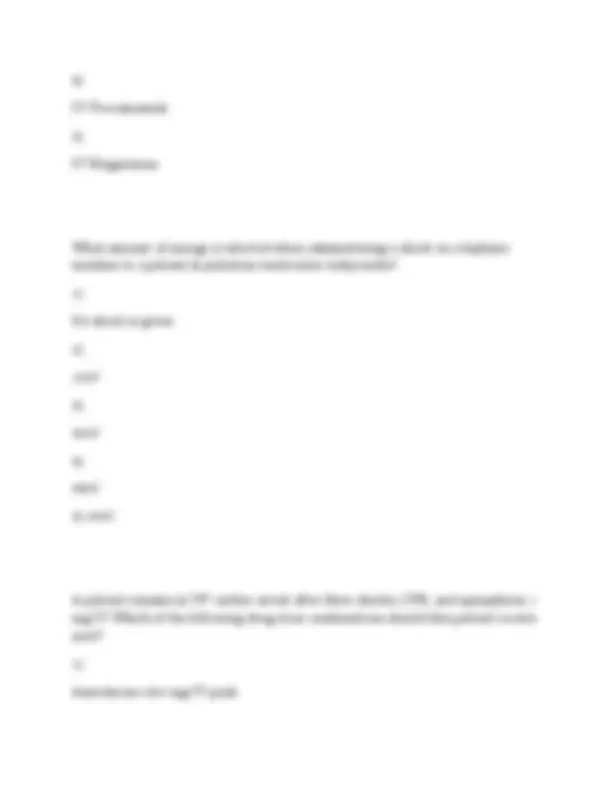
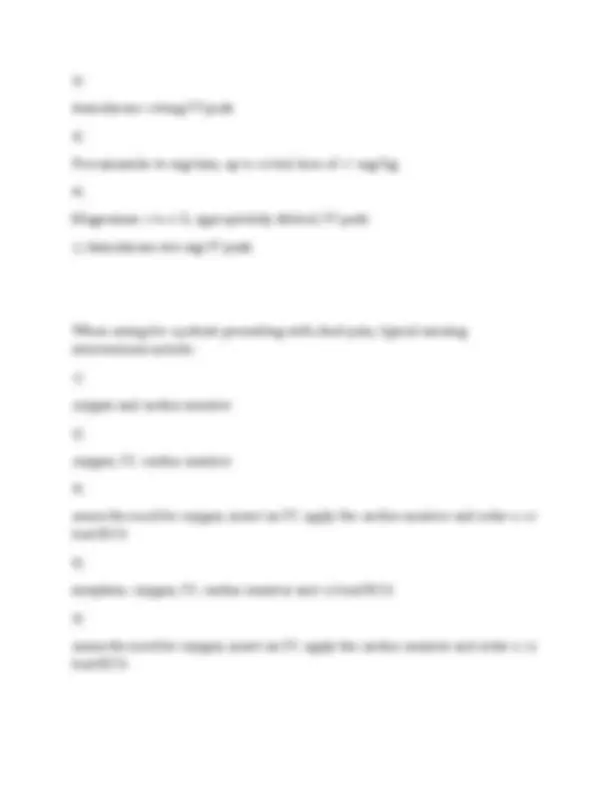
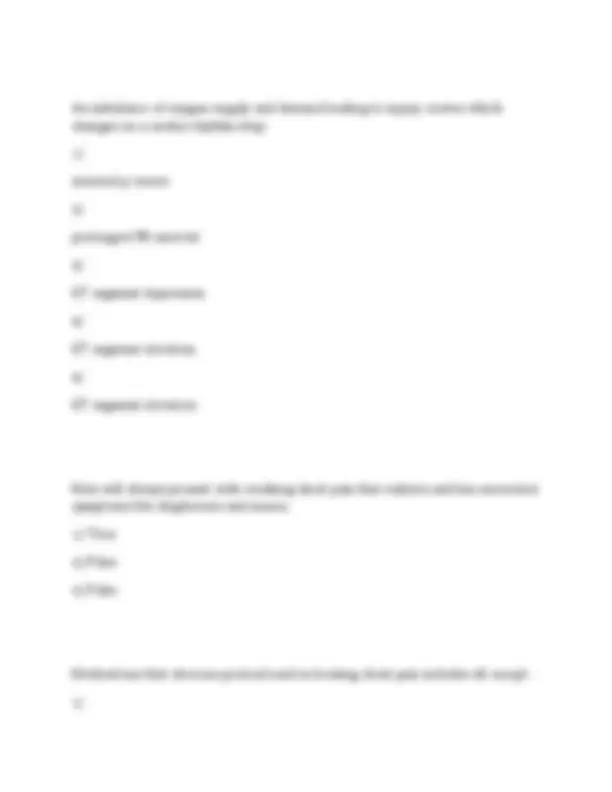
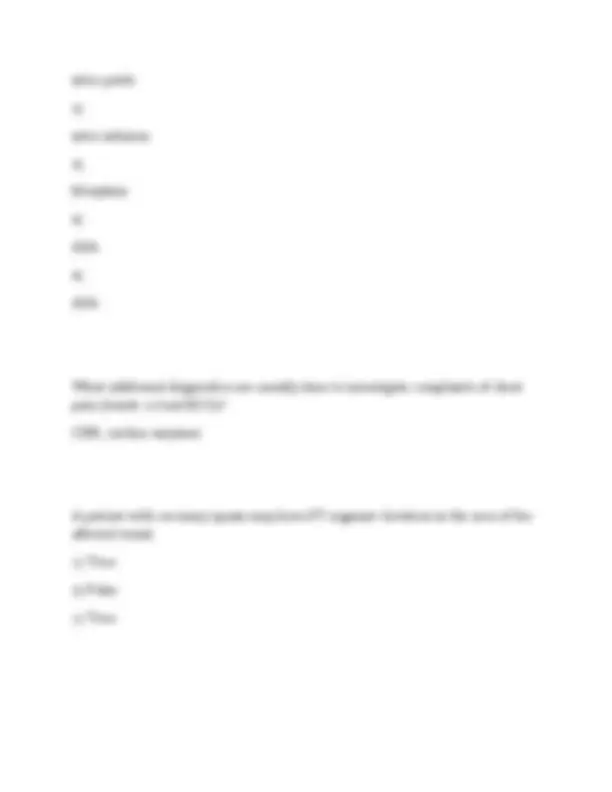
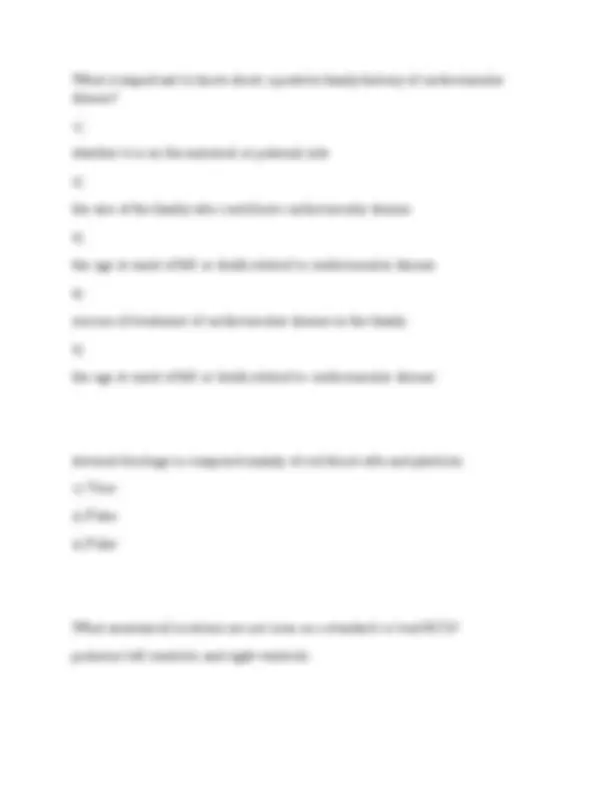
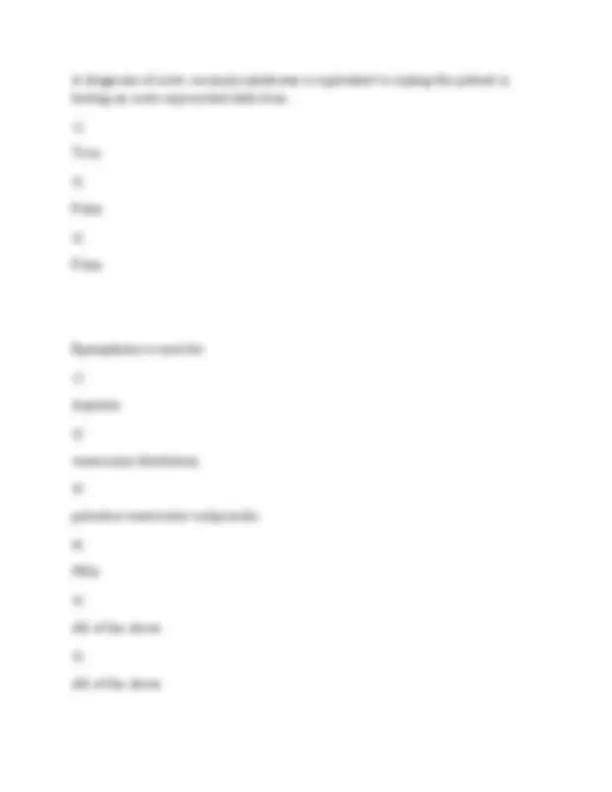
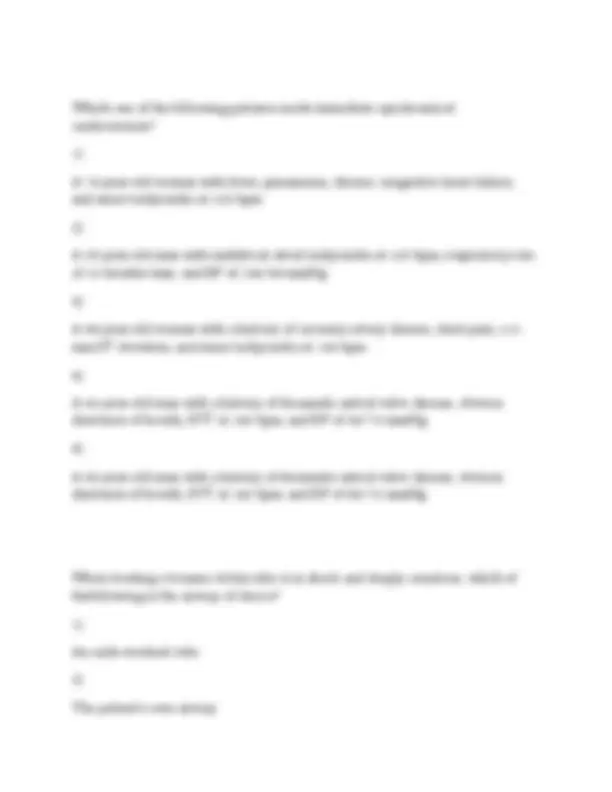
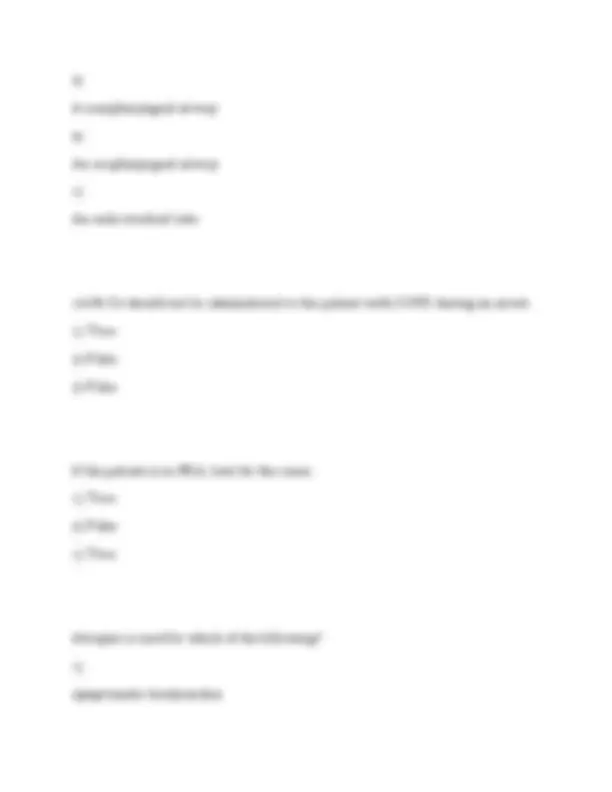
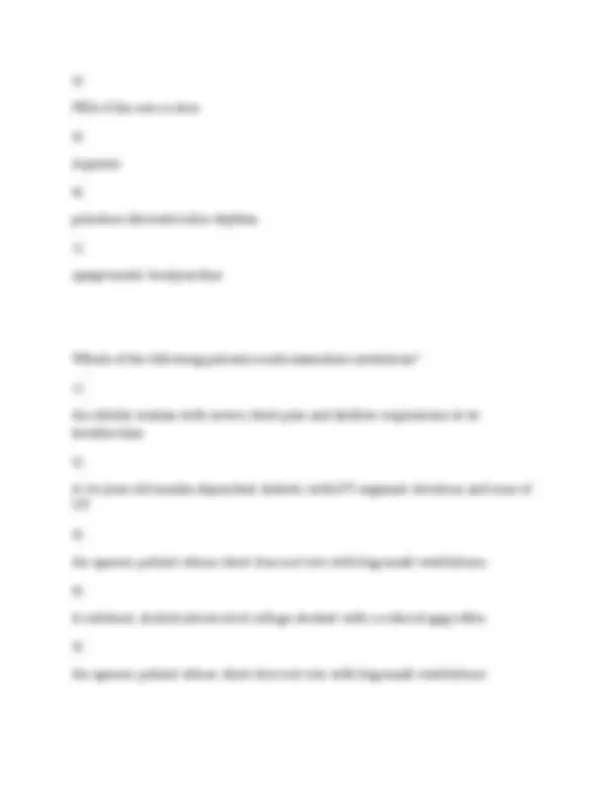
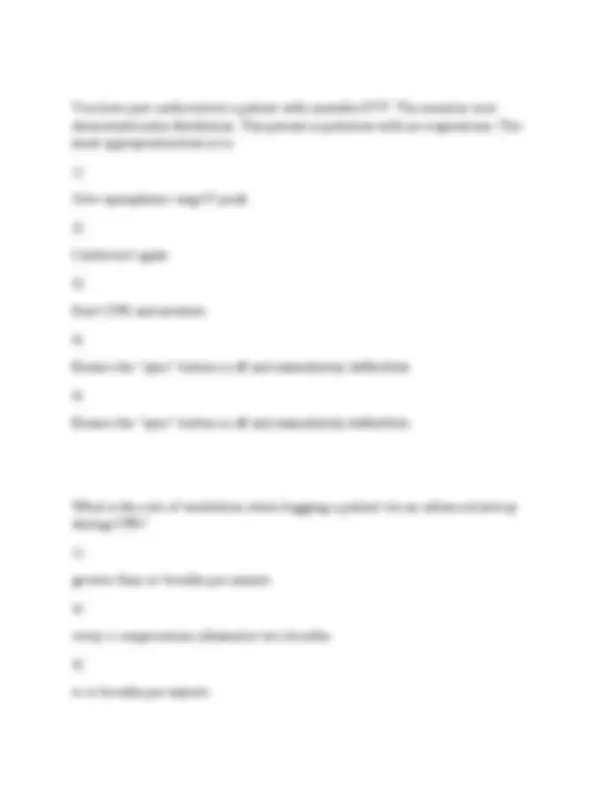
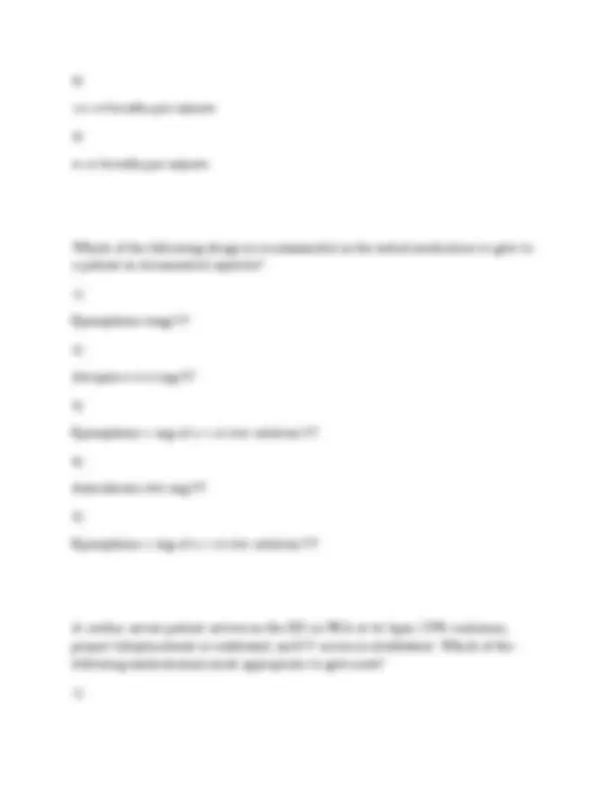
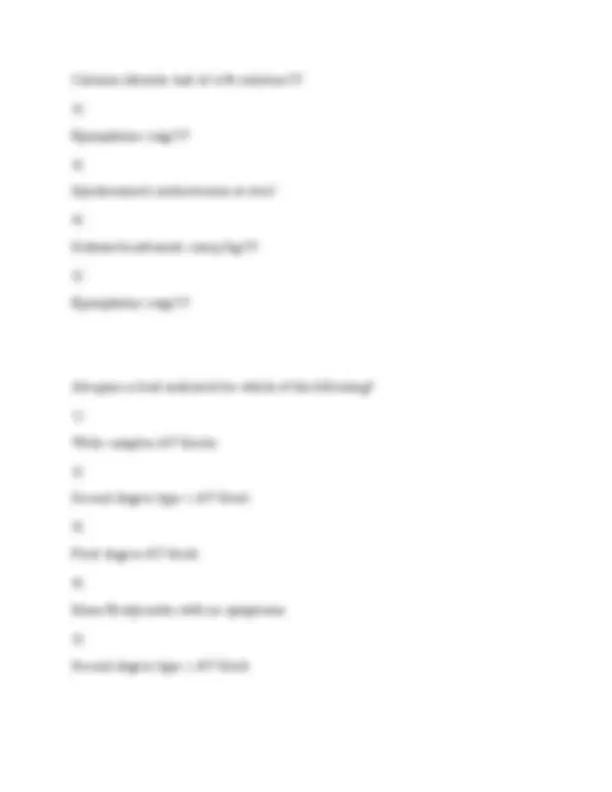
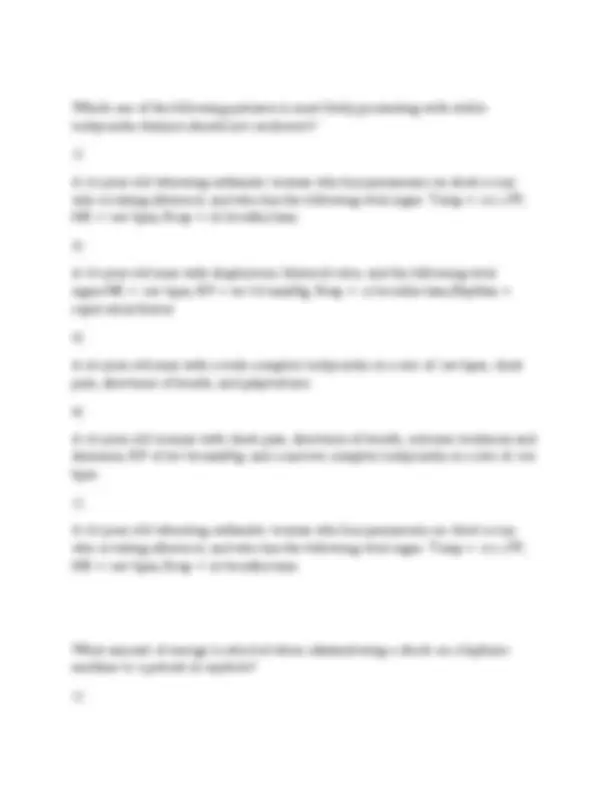
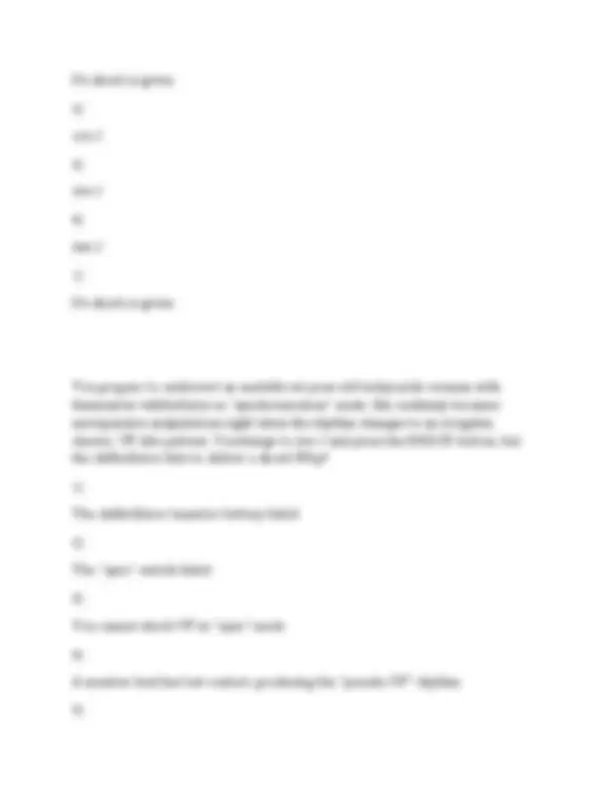
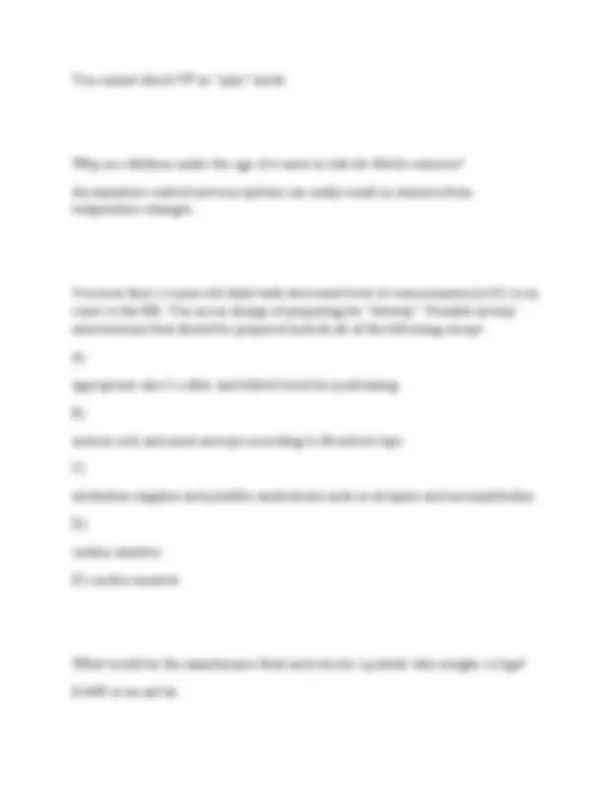
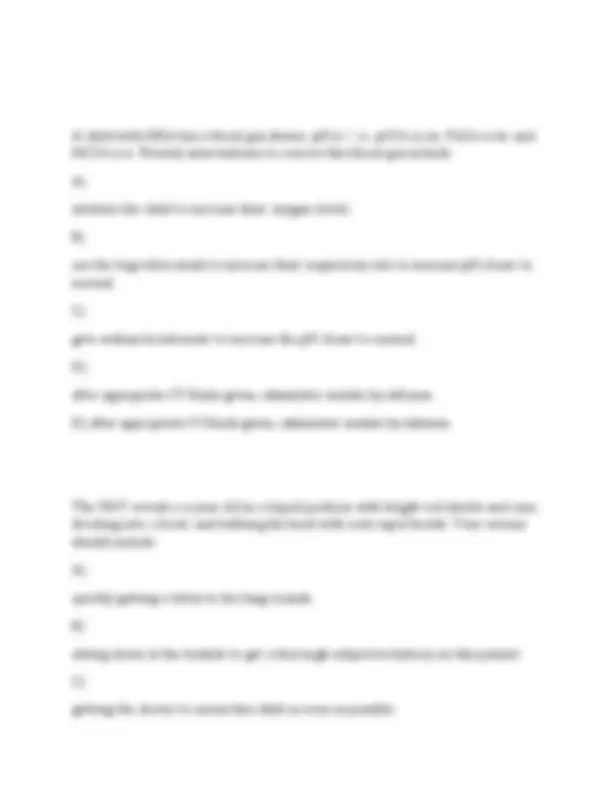
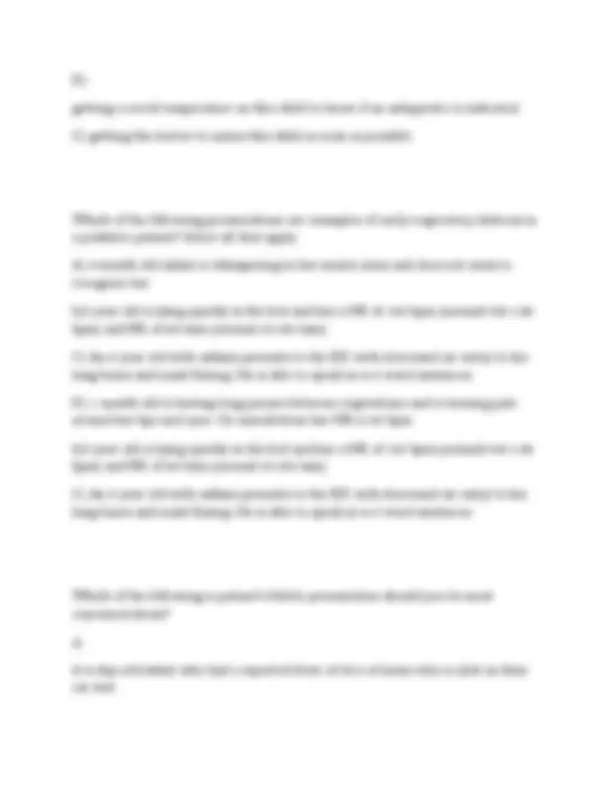
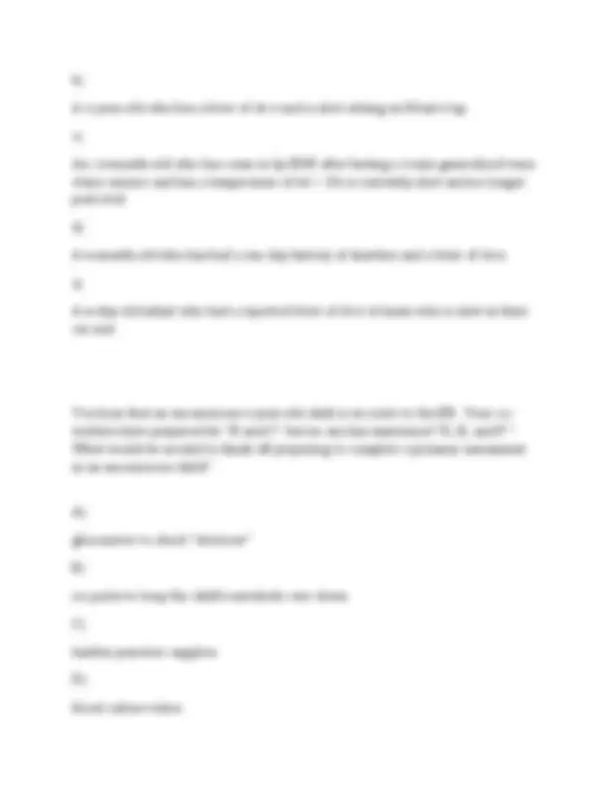
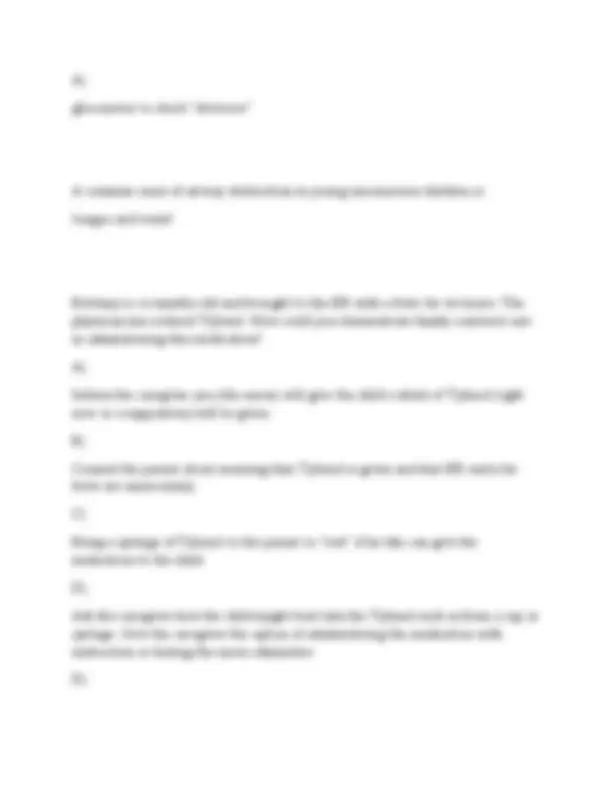
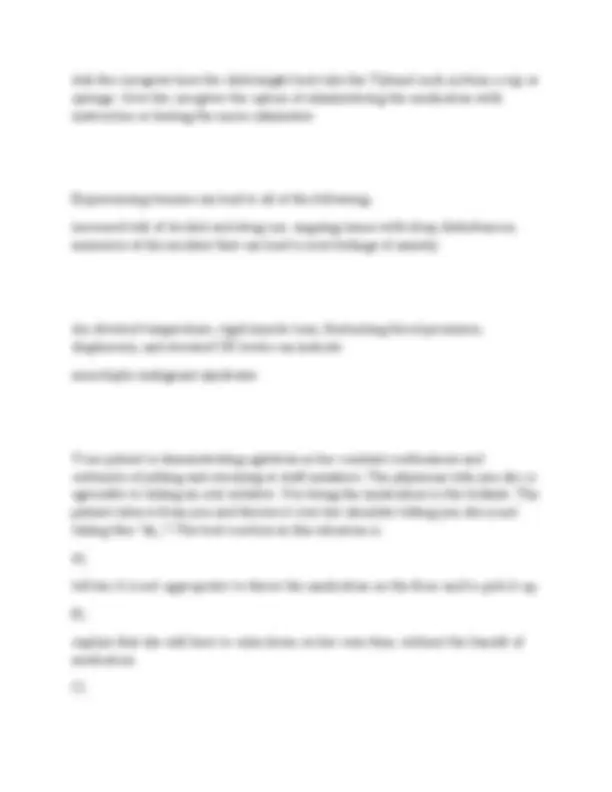
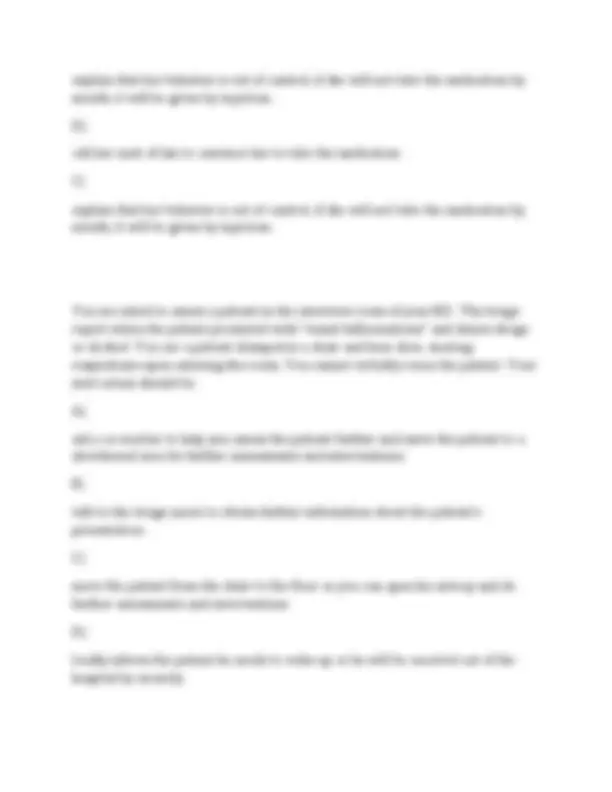
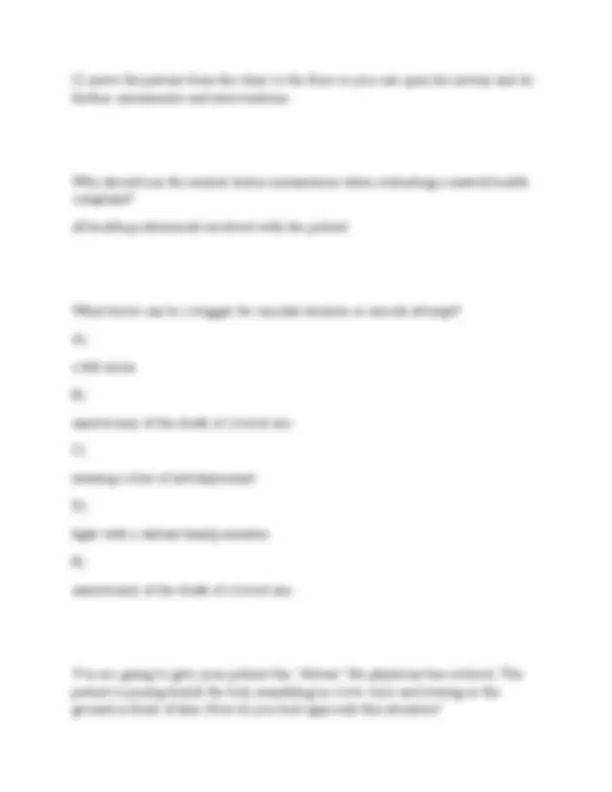
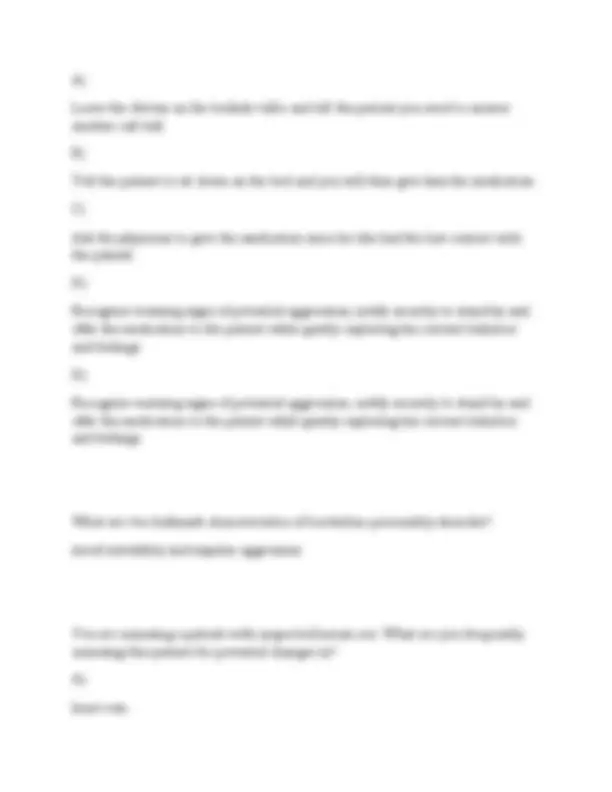
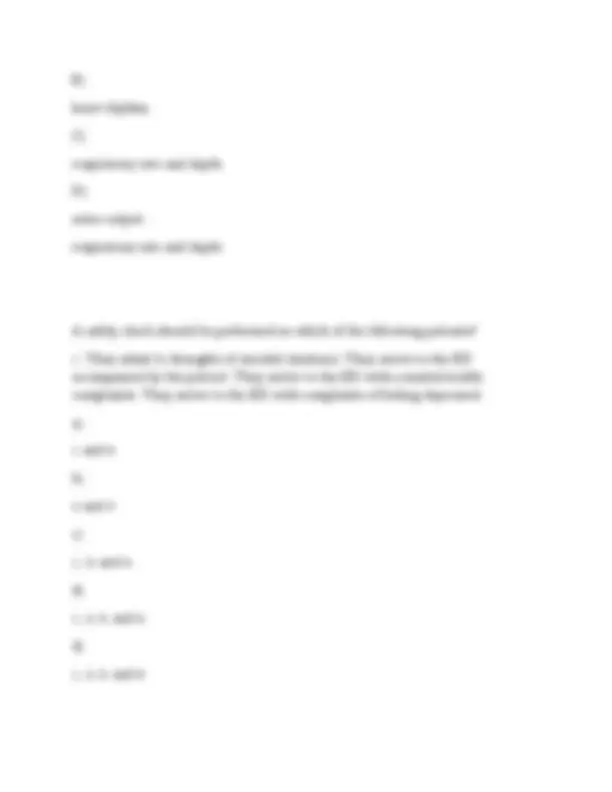
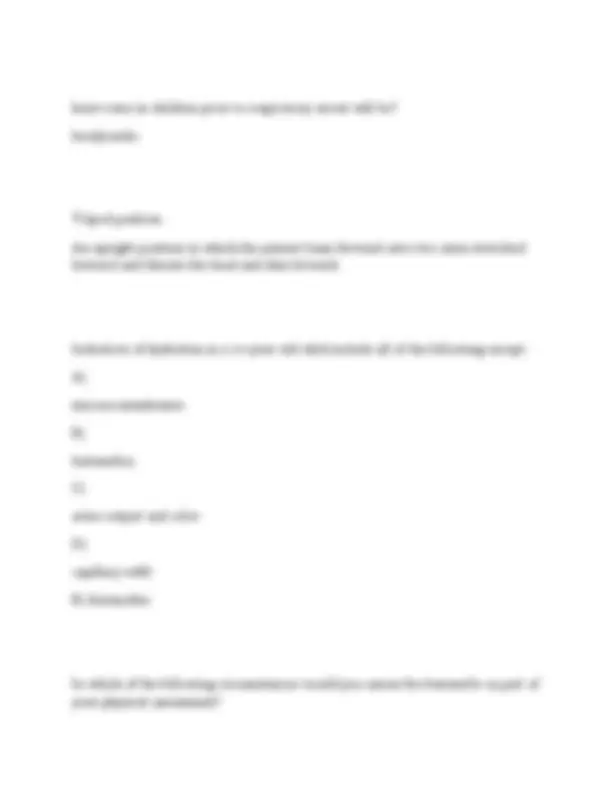
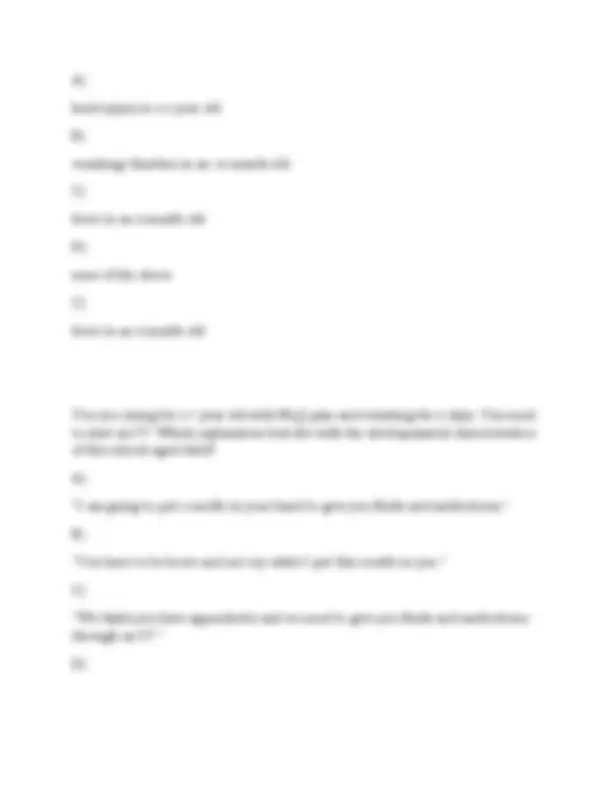
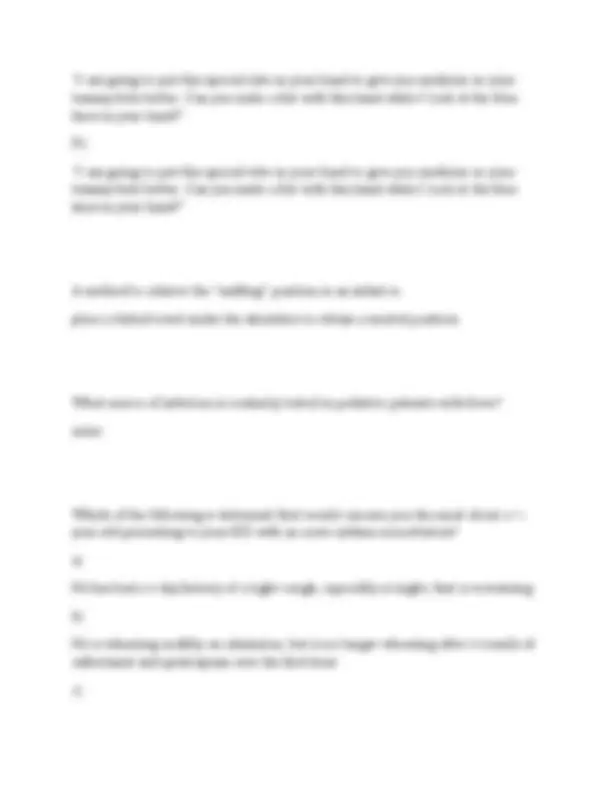
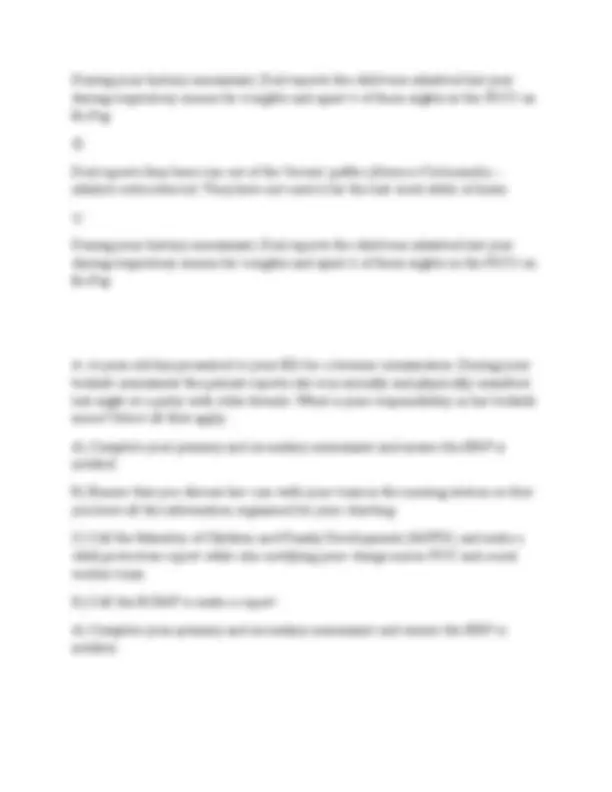
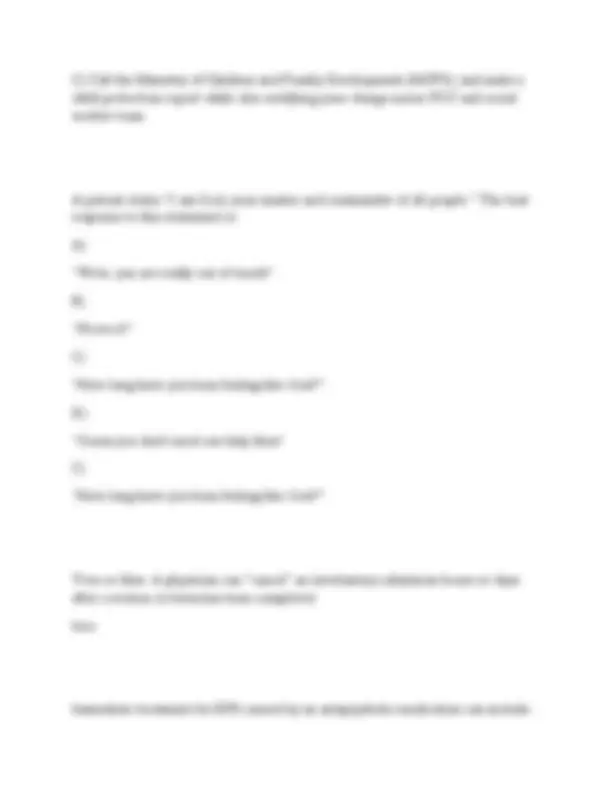
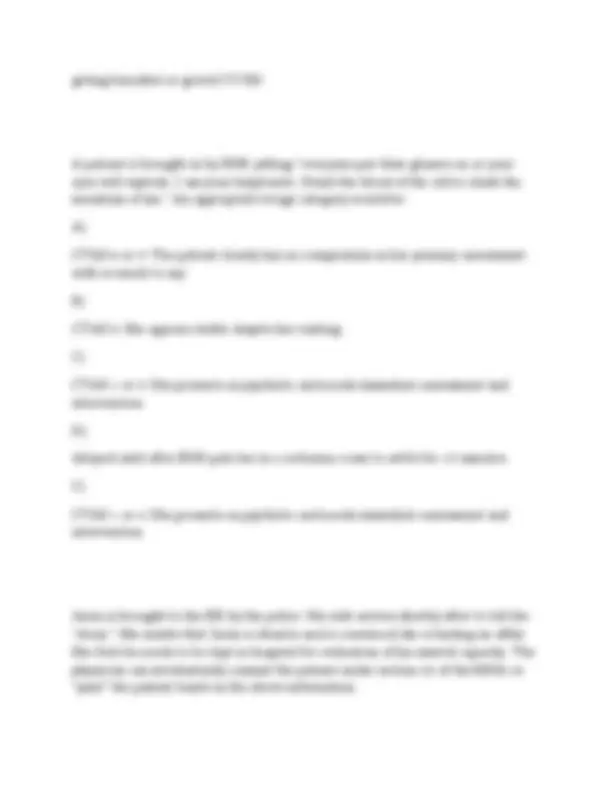
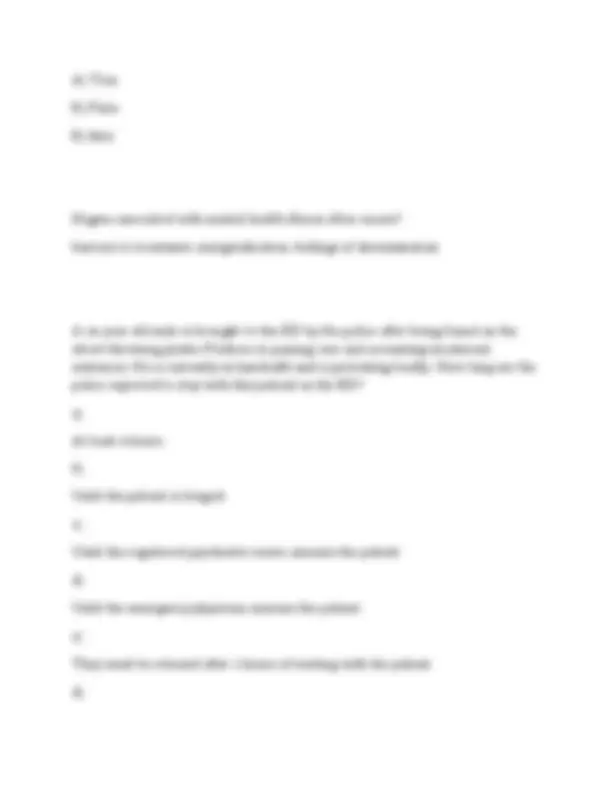
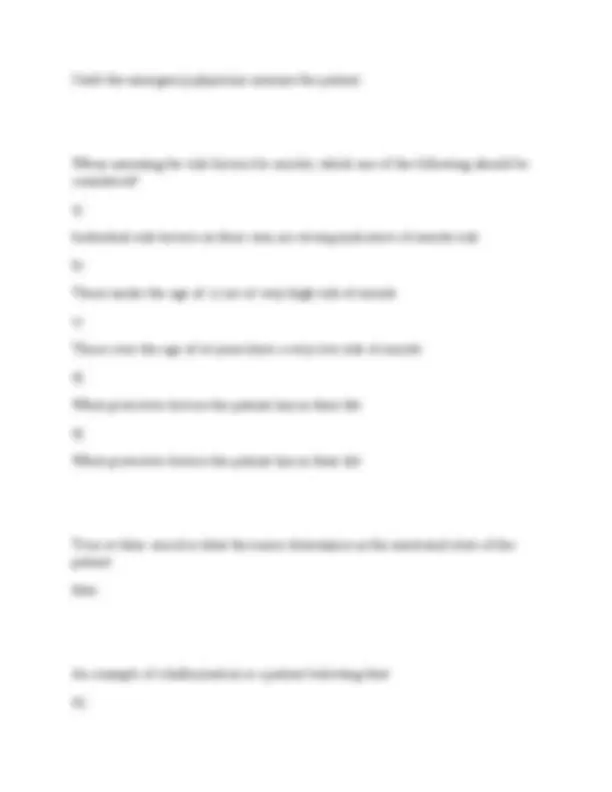
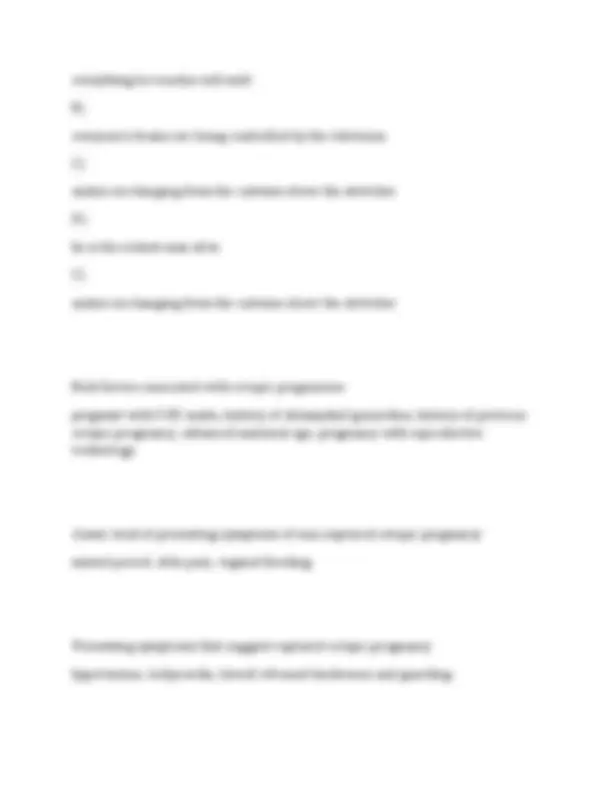
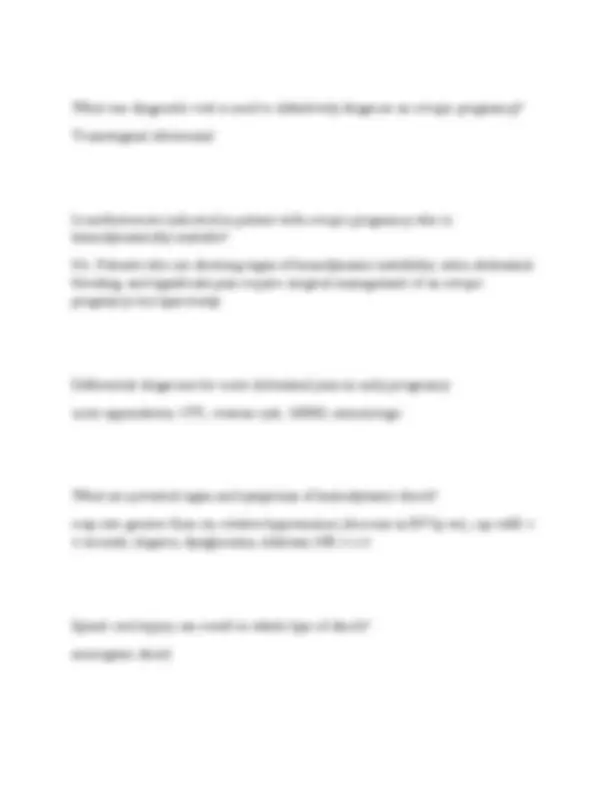
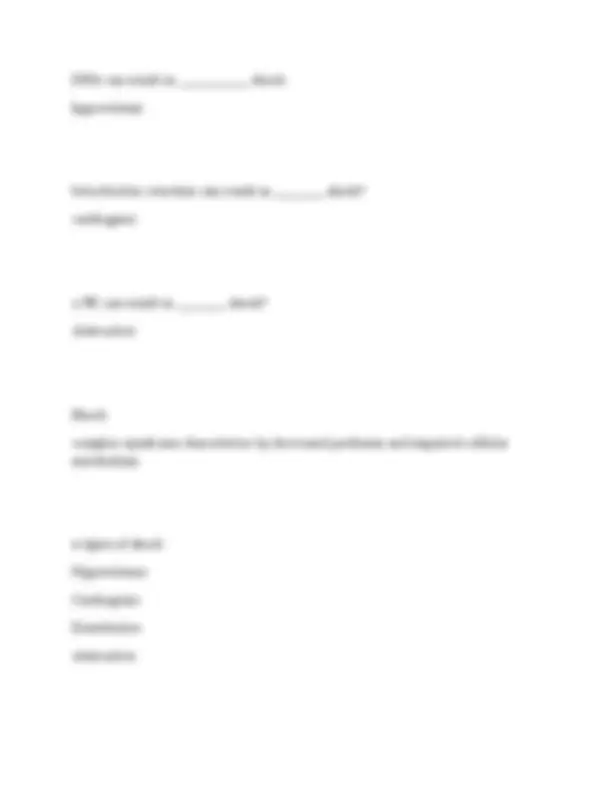

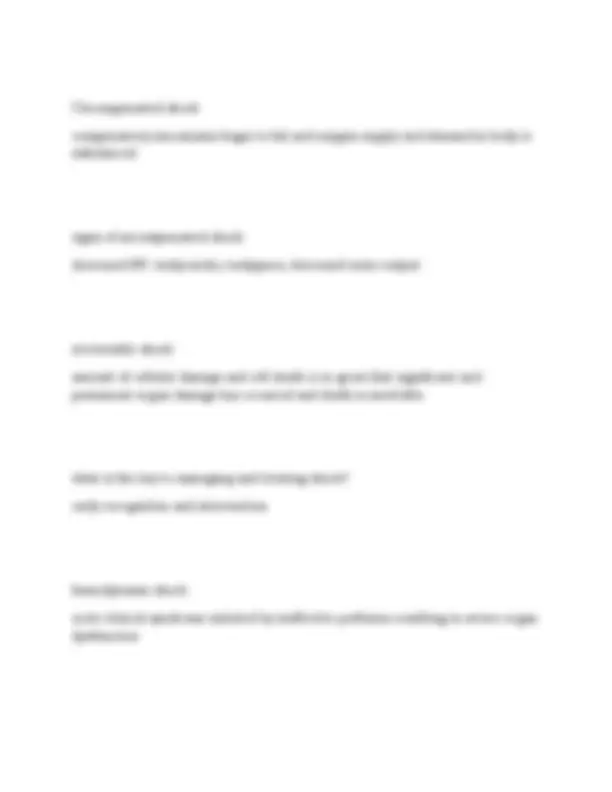
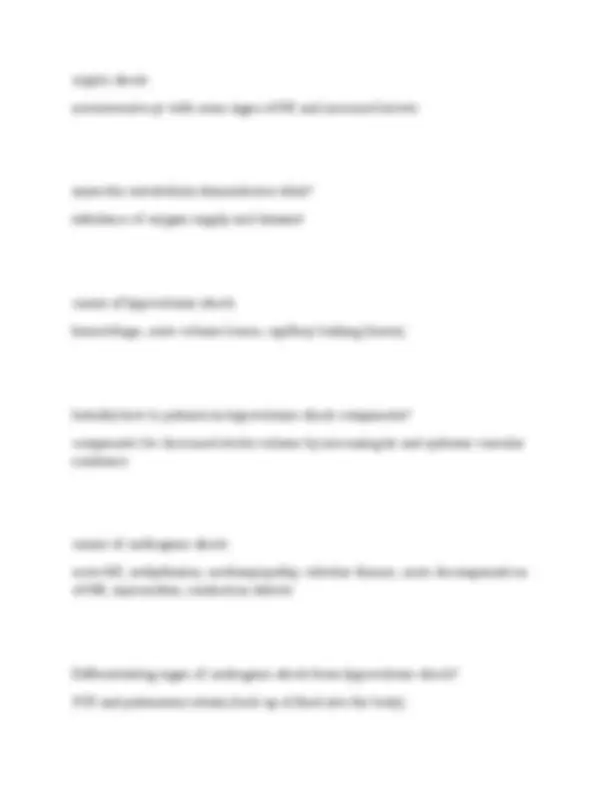
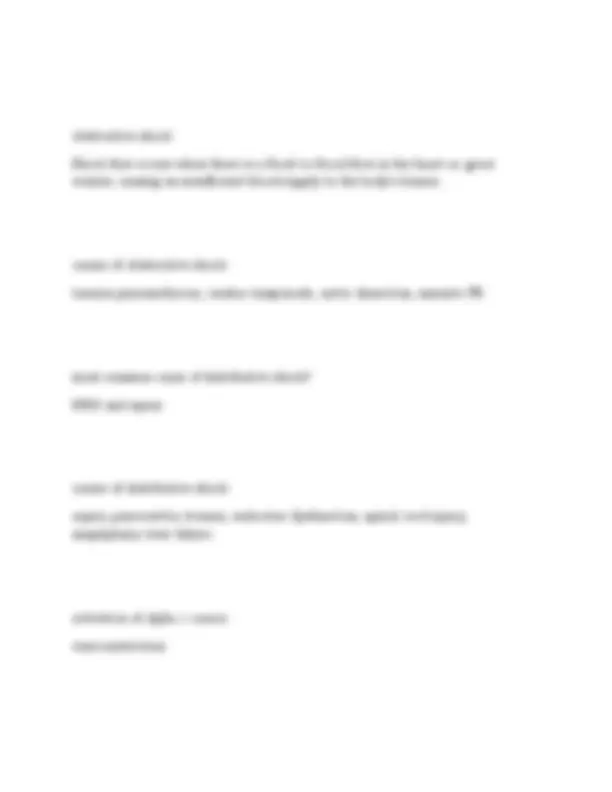
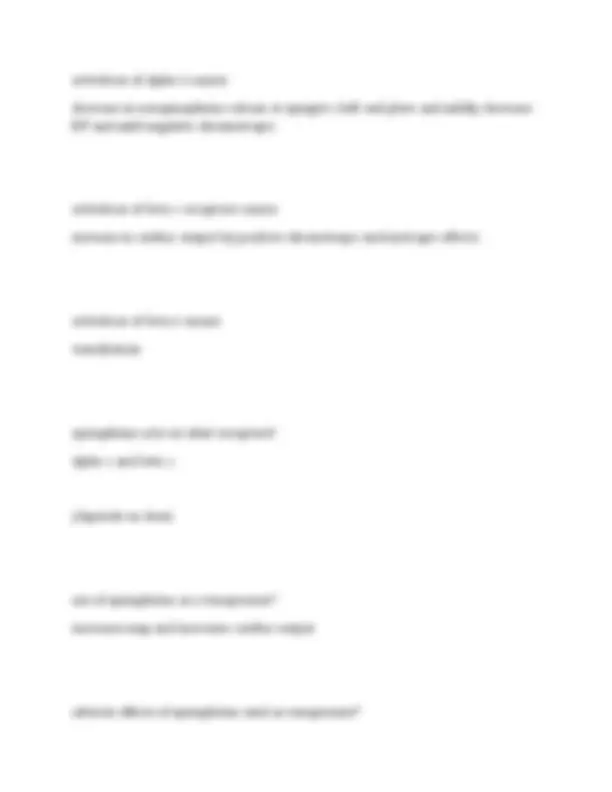

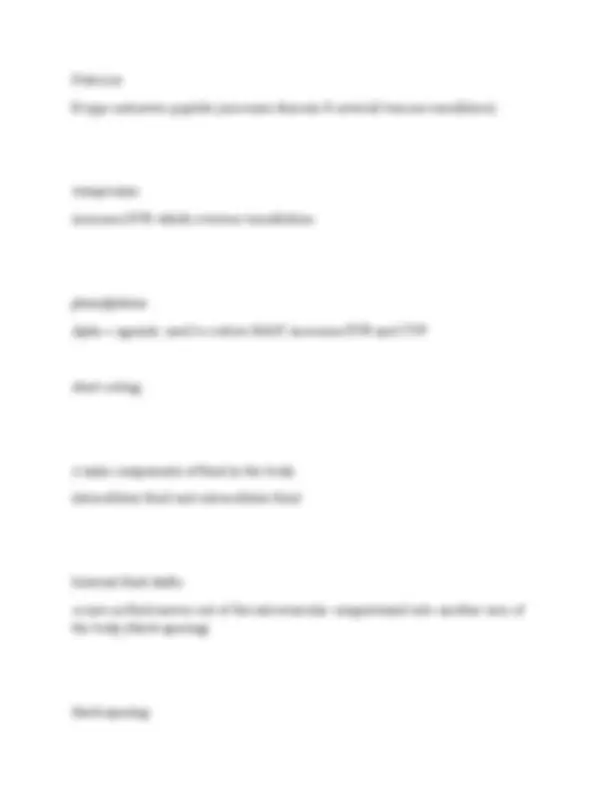
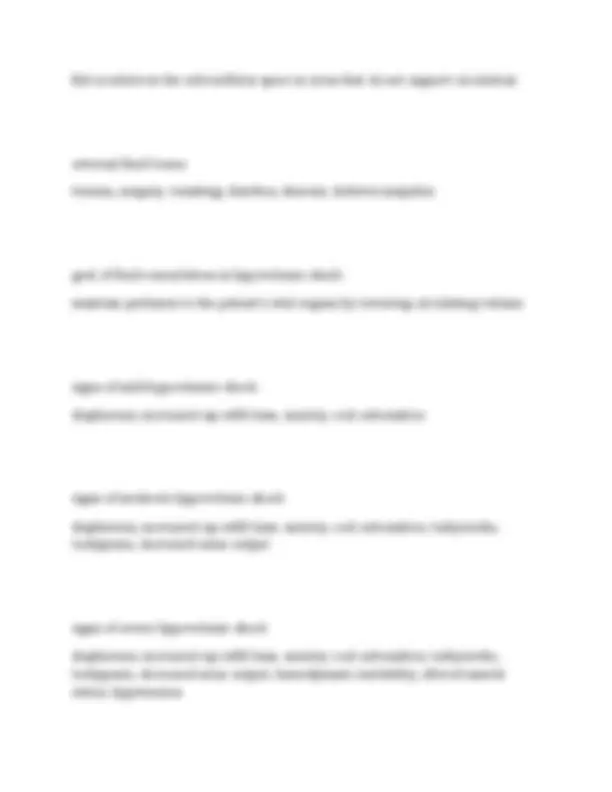
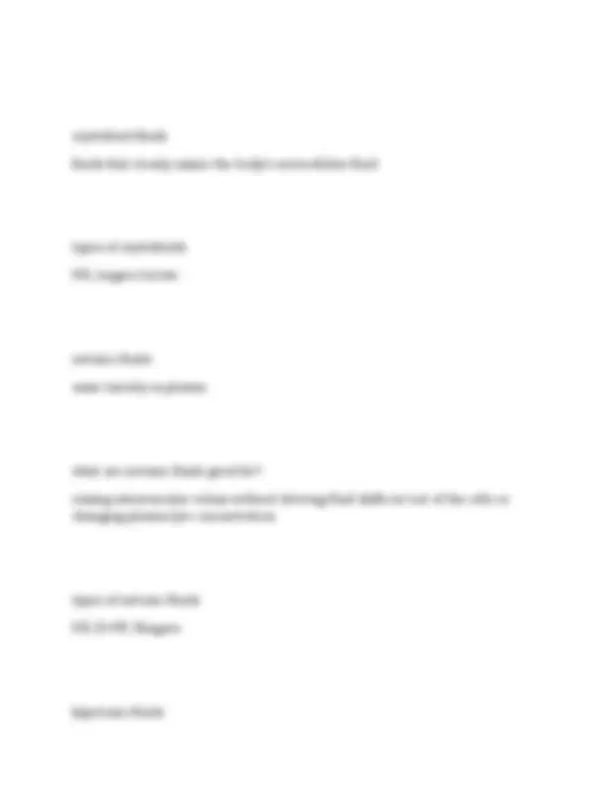
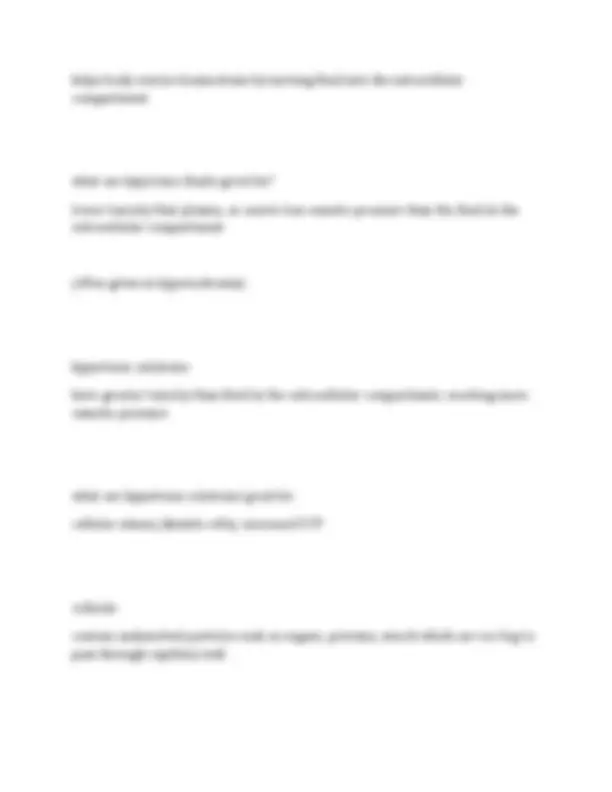
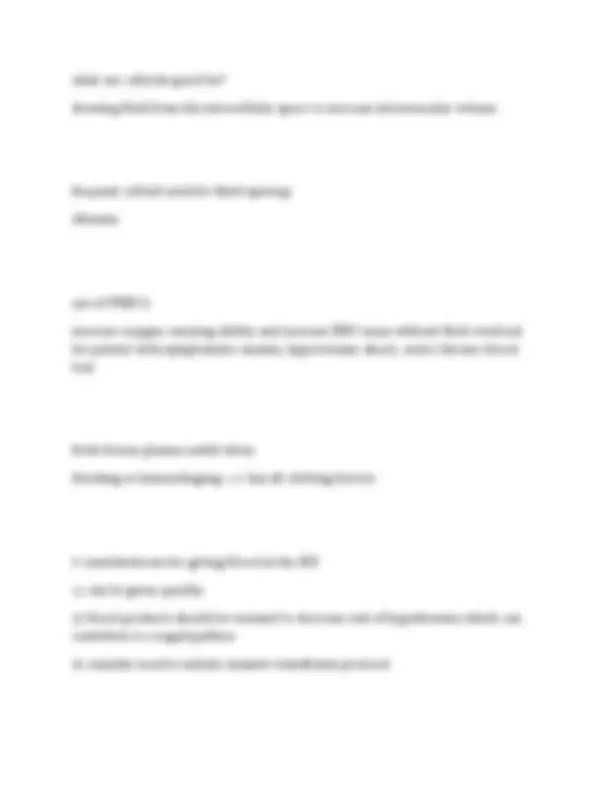
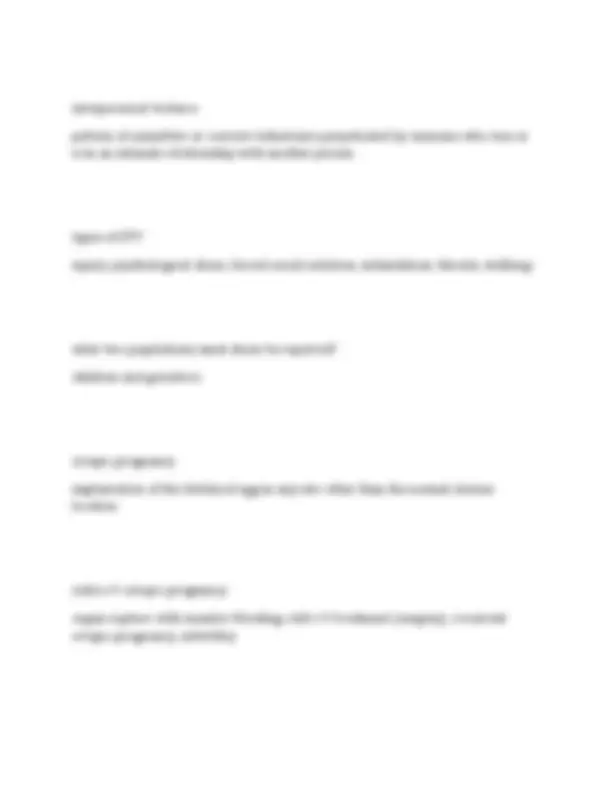
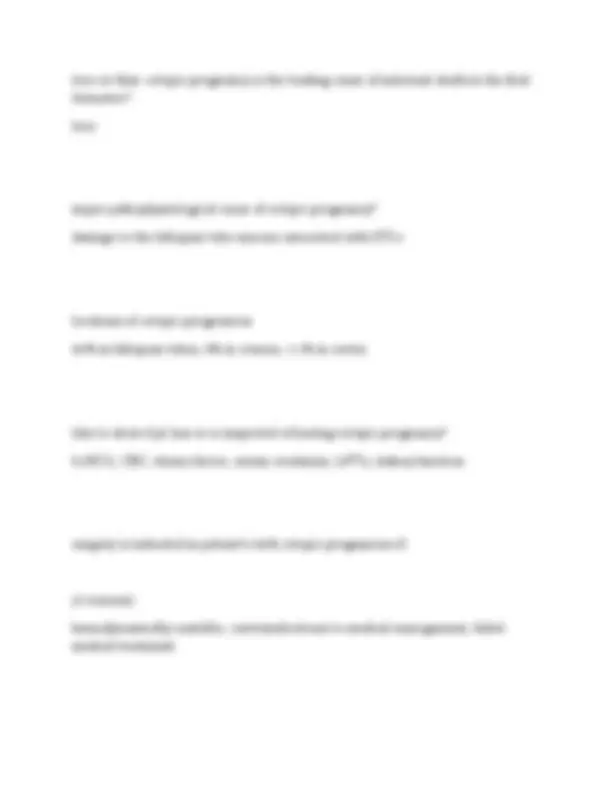
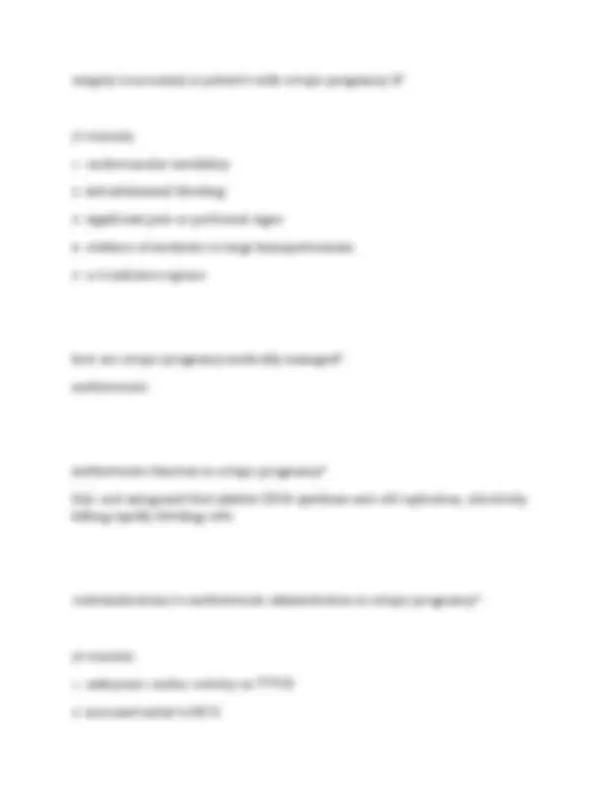

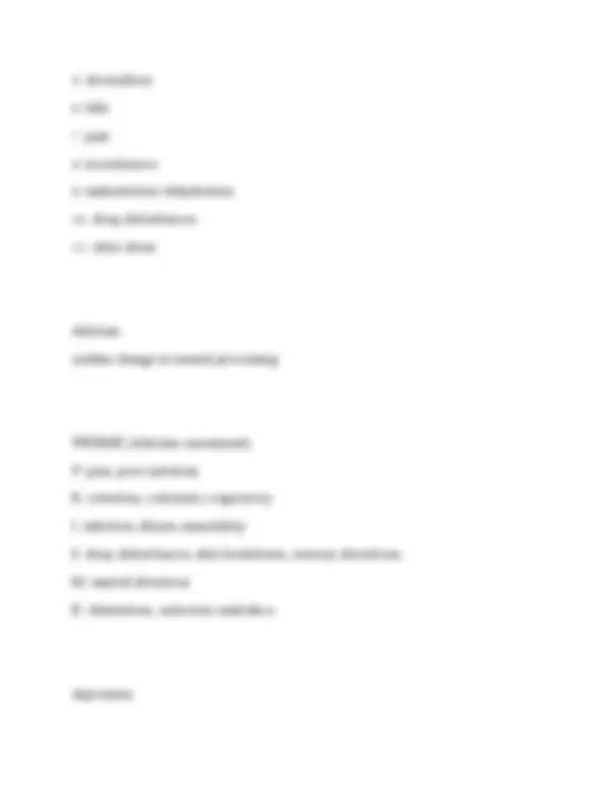
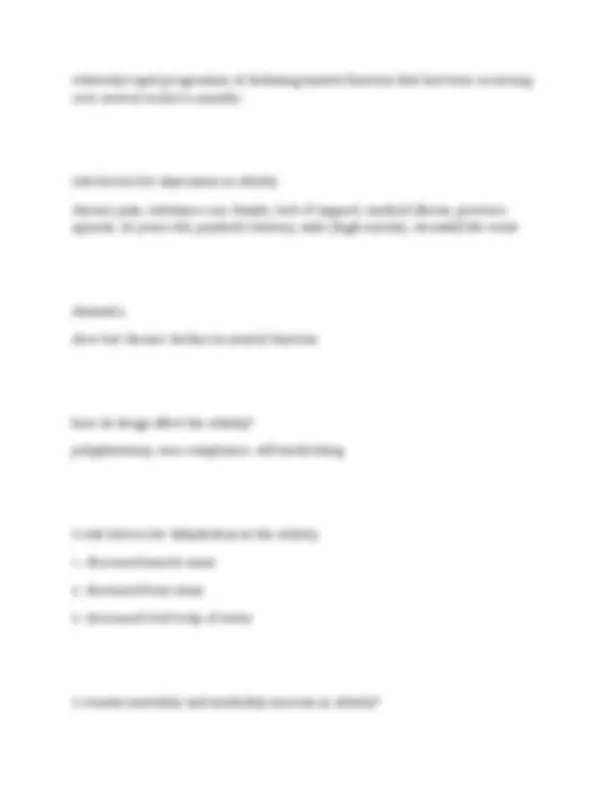
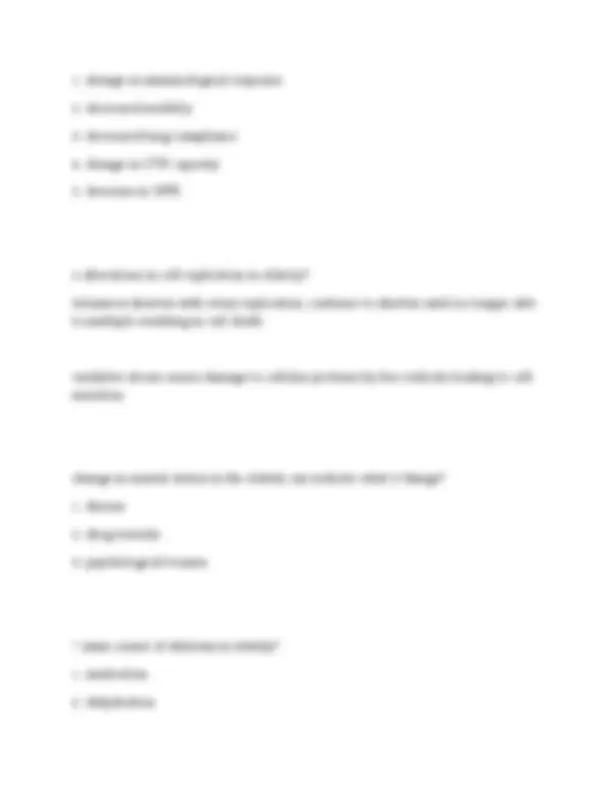
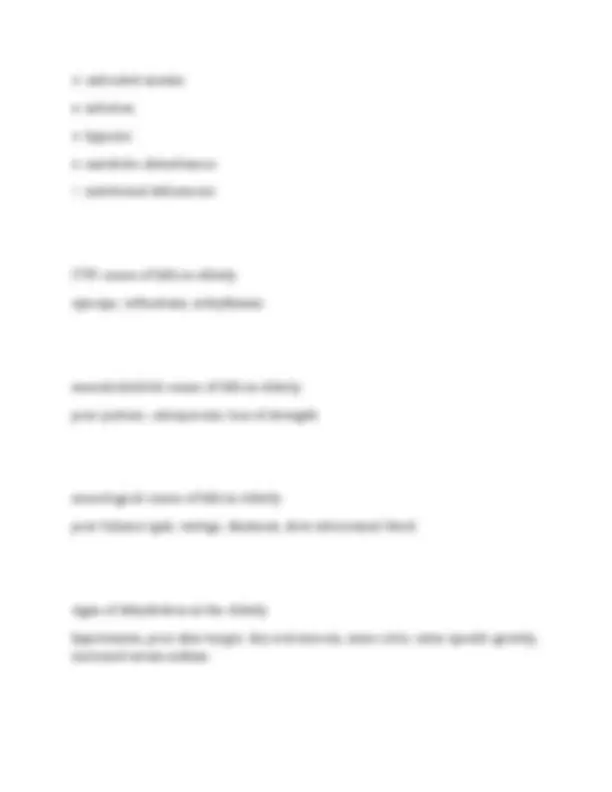
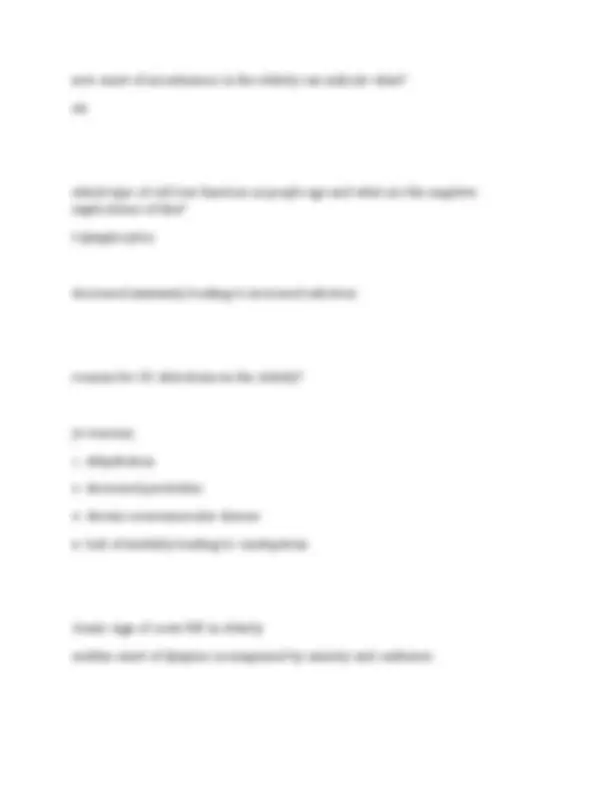
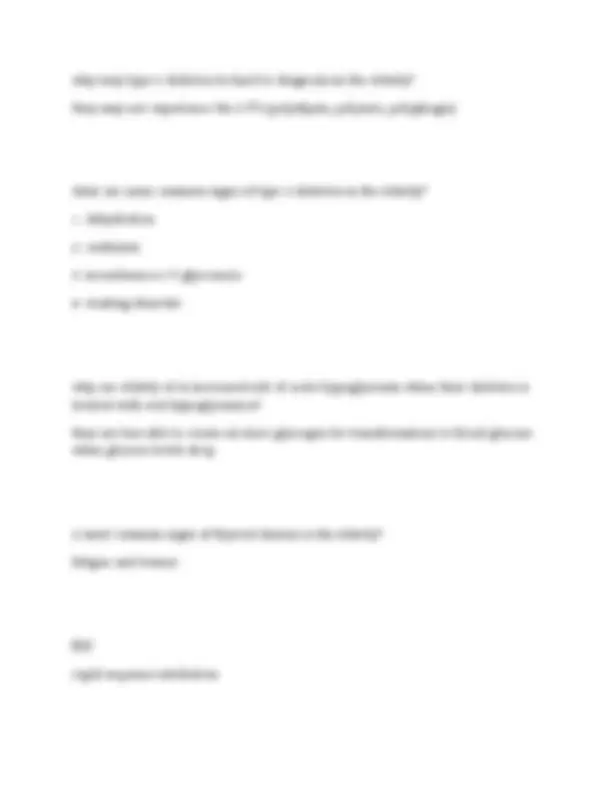
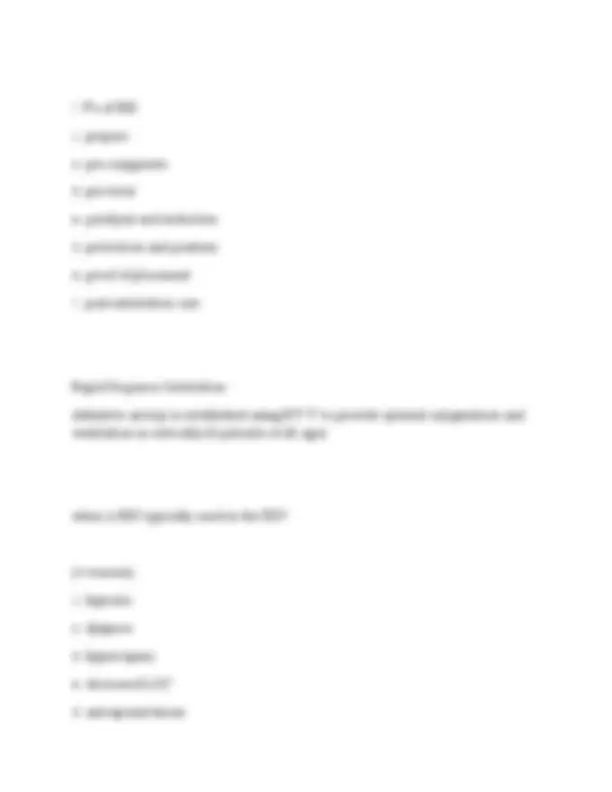
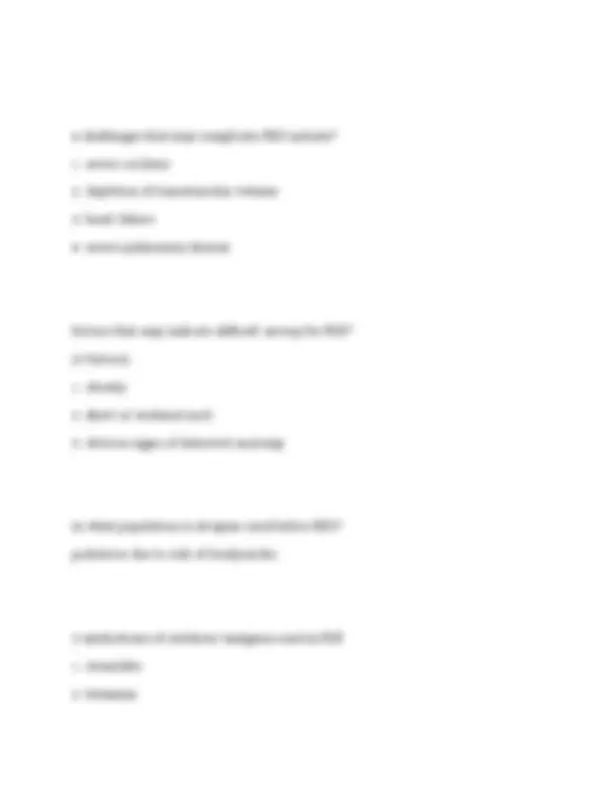
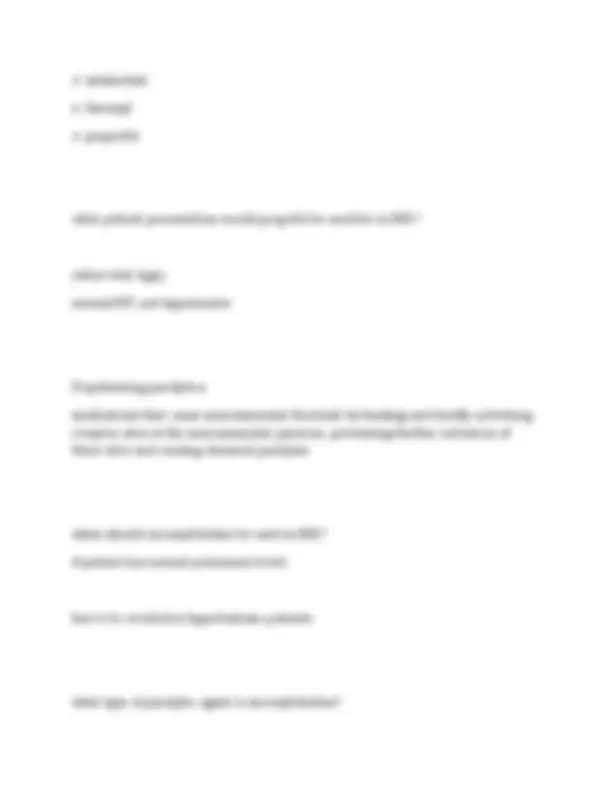

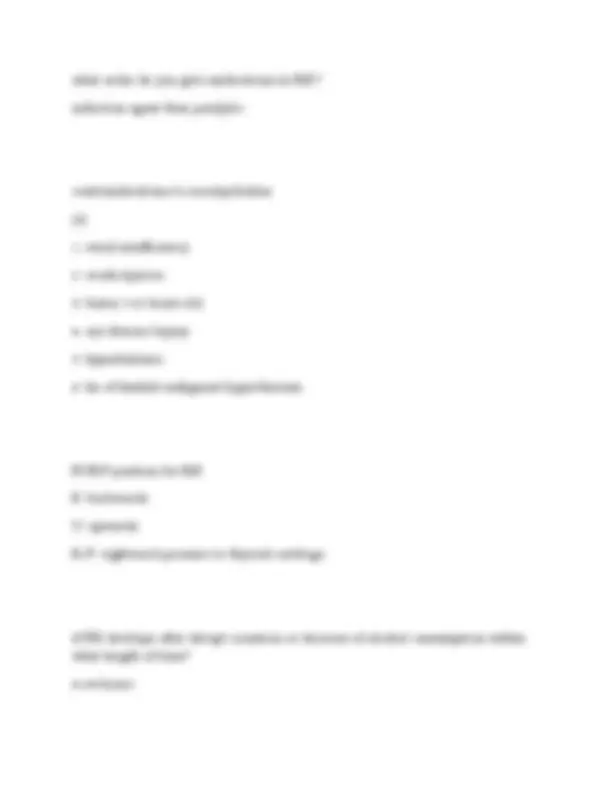
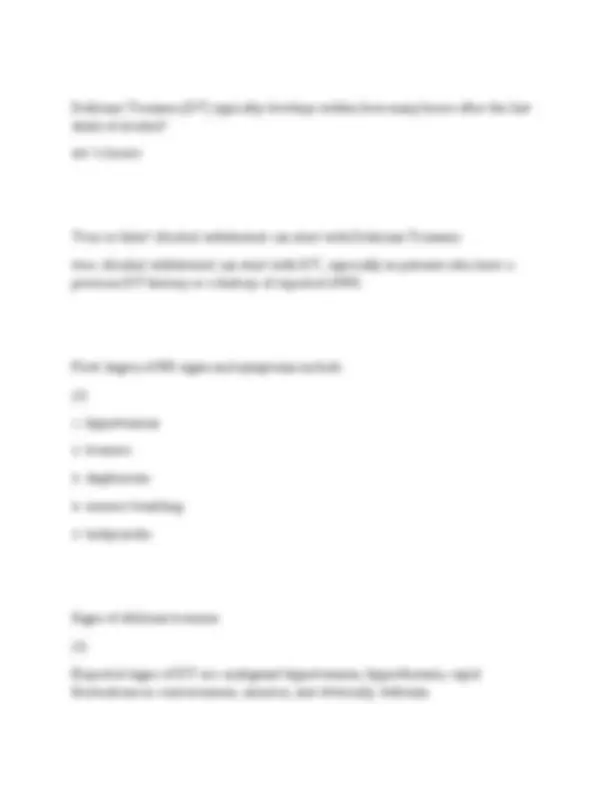
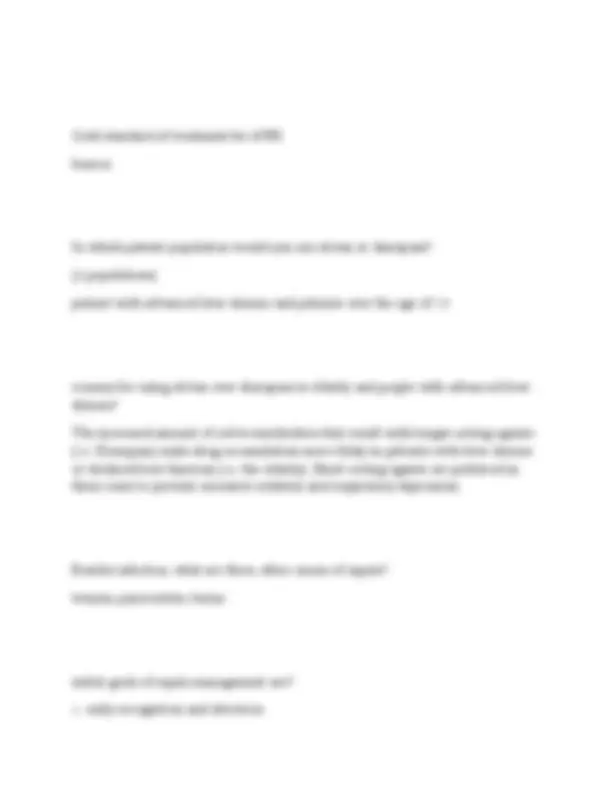
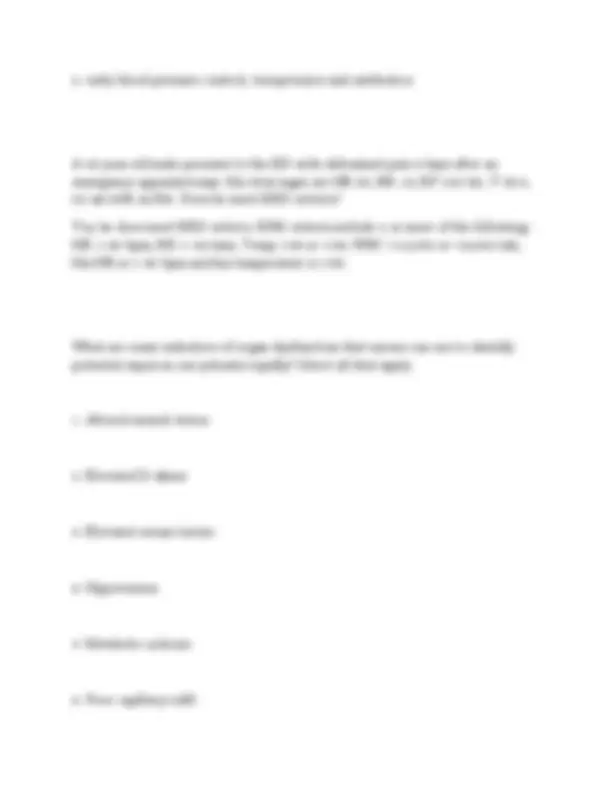
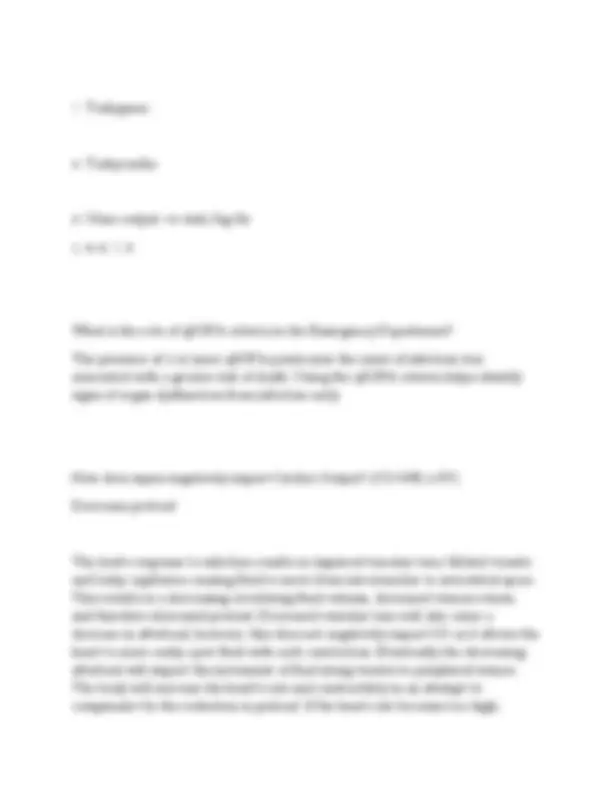
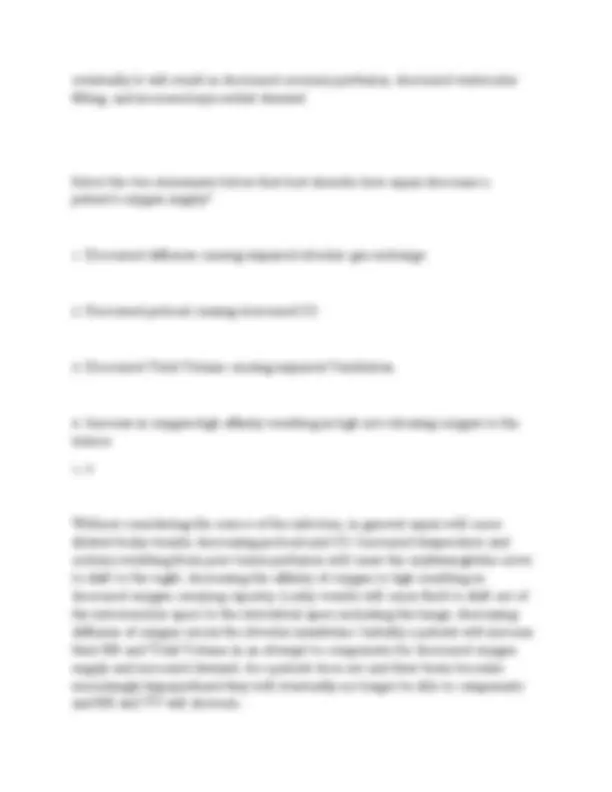


Study with the several resources on Docsity

Earn points by helping other students or get them with a premium plan


Prepare for your exams
Study with the several resources on Docsity

Earn points to download
Earn points by helping other students or get them with a premium plan
Community
Ask the community for help and clear up your study doubts
Discover the best universities in your country according to Docsity users
Free resources
Download our free guides on studying techniques, anxiety management strategies, and thesis advice from Docsity tutors
BCIT NSER 7210 EMERGENCY NURSING THEORY 2 FINAL EXAM 2025|REAL 690 QUESTIONS AND ANSWERS|100% VERIFIED|GRADED A+
Typology: Exams
1 / 199

This page cannot be seen from the preview
Don't miss anything!





























































































Which of the following statements about norepinephrine is false? a) It is a catecholamine with potent alpha adrenergic effects b) It Is very helpful in distributive forms of shock because of it's potent vasoconstrictive characteristics c) It does not significantly increase heart rate as compared to epinephrine d) It is a good choice for patients with low cardiac outputs states secondary to hypovolemia D) It is a good choice for patients with low cardiac outputs states secondary to hypovolemia When resuscitating a severely hypovolemic patient, when should blood products be considered? A) after 4-6 litres of crystalloids have been infused and the patient remains unstable B) after 2-3 litres of crystalloids have been infused and the patient remains unstable C) only when obvious deadly bleeding is observed D) only when the serum blood test results reveal a severely low hemoglobin B) after 2-3 liters of crystalloids have been infused and the patient remains unstable
True or false: all ectopic pregnancies must be managed surgically? false Which blood component contains coagulation factors? a) PRBC b) platelets c) plasma d) RH positive blood c) plasma A geriatric patient presents to your ED with a sudden onset of confusion. What is the most common cause of acute confusion in the elderly? a)Adverse effects from medications (i.e. drug-drug interaction or toxic levels of drug) b)Untreated anemia c)Nutritional deficiency d)It is a normal result from the aging process A) adverse effects from medications
Which of the following is not a potential cause of hypovolemic shock? a)Ruptured ectopic pregnancy b)Prolonged vomiting and diarrhea c)A large surface burn d)A pulmonary embolism D) pulmonary embolism The most significant potential problem for a patient with a tubal rupture from an ectopic pregnancy is: A)serious abdominal pain B)hypovolemic shock C)fetal death D)surgical scarring B) hypovolemic shock A septic patient's MAP is still only 58 after receiving 2 fluid boluses. The physician does not want to give further crystalloid boluses. What is the next best treatment option? A)Trendelenburg position to "fool the baroreceptors" and increase the MAP. B)giving colloids such as blood or Pentaspan. C)MAST pants, if available in the hospital. D)initiating vasopressors to "squeeze the pipes."
Rodney, a 55-year-old male presents to the ED with a wound on his arm requiring suturing. After being in the waiting room for a few hours he is moved to the rapid assessment zone (where you are working) for treatment. You notice he appears shaky and diaphoretic. His radial pulse is rapid but strong, his skin feels hot, and his blood pressure is 170/92. He is complaining of nausea. You ask about his alcohol use and he admits to being a heavy drinker (12-16 beer per day) and his last drink was 5 hours ago. What signs/symptoms does Rodney have that are indicative of early alcohol withdrawal syndrome?
D)apply the cardiac monitor A) gather and prepare the anticipated medications the doctor will order STAT Which of the following patients would be at increased risk for being immunocompromised?
all of the above. D) all of the above Which of the following statements about interpersonal violence screening in the ED is false? a) Questions should be asked in a private place without accompanying visitors present b) It is important to inform the patient that you ask all patients about this and their response is confidential c) If a patient is too intoxicated or ill at the time of presentation to answer the screening questions, they should be performed later in the visit when they are able d) It should only be performed on adolescents or adults at increased risk for IPV D) it should only be performed on adolescents or adults at increased risk for IPV Treatment goals in hypovolemic shock involve: A) maximizing oxygen availability to cells
maximizing perfusion to cells with adequate volume status C) monitoring for multiple organ dysfunction D) all of the above D) all of the above A patient can still be having an ectopic pregnancy with a negative pregnancy test. A) True B) False A) true A 40-year-old patient presents with severe abdominal pain for 4 hours with associated nausea and vomiting. No diarrhea is reported. Vital signs are as follows: T 37.8 (o), HR 125, RR 20, BP 120/55. The rationale that best explains this patient's level of urgency is she is: A) stable because a patient will have a slight temperature and slight tachycardia when they have pain. B) potentially unstable because her vital signs may indicate a compensated shock state from pain and vomiting.
D dimer D) Rhesus factor B) beta-HCG When an elderly patient has had a fall, what systems need to be investigated as a cause of the fall? A) cardiovascular B) neurological C) musculoskeletal D) all of the above D) all of the above An elderly patient presents to the ED with vomiting and abdominal pain. The patient is sitting up, speaking in full sentences with no WOB. His radial pulse is rapid and his skin is warm and dry. His peripheral cap refill is 3 seconds. His vital
signs are HR 102, BP 110/70, RR 22, O2 97% on RA, and his temperature is 37.2. What best describes what shock state this patient is in? a) There is no evidence of shock b) Compensated shock c) Uncompensated shock d) Irreversible shock B) compensated shock Margaret, an 88-year-old women presents to the ED after a fall from her bed in the middle of the night at the long-term care facility she lives in. She is complaining right hip pain. She has a history of osteoarthritis and hypertension. She has been having frequent falls over the last few weeks and the staff report she appears more confused over that period of time. Which of the following geriatric giants would you be concerned about for Margret at this time? Select all that apply. A) Falls B) Pain C) Sleep disturbance D) Delirium E) Drugs A, B, C, D, E
A) True B) False B) false Tolerance of alcohol can lead to the need for greater amounts of medications used in alcohol withdrawal treatment. A) True B) False A) true Which of the following statements about benzodiazepines in AWS treatment is false? a) Benzodiazepines are the gold standard treatment b) Diazepam is long-acting and Lorazepam in a shorter acting c) Longer acting benzodiazepines are preferred in elderly and advanced liver disease to prevent excessive sedation and respiratory depression d) The IV route of is appropriate for moderate to severe AWS and the oral route for is appropriate early AWS
C) Longer acting benzodiazepines are preferred in elderly and advanced liver disease to prevent excessive sedation and respiratory depression Which of the following statements about viral load in a HIV positive patient is false? a) The goal of antriretroviral therapy is an undetectable viral load b) The higher the viral load the more the likely the patient is to have HIV related symptoms/complications c) A high viral load may indicate that the patients antiretroviral therapy is not effective or the patient is not taking it as prescribed d) The lower the viral load the more likely a patient is to experience opportunistic infections D) the lower the viral load the more likely a patient is to experience opportunistic infections You are following the sepsis protocol and giving fluid boluses to maintain a MAP of 65. The patient has received almost 3 liters of fluids. What assessment finding would indicate an oxygenation problem? A) weak peripheral pulses
As you walk by a patient's bedside, who is admitted for alcohol withdrawal, you note his eyes roll back and he goes into a generalized tonic-clonic seizure. Your immediate assessment includes: A) inserting an oral airway. B) assessing for airway and breathing by looking and listening for tongue obstruction, secretions, or cyanosis. C) looking for the doctor in the area you last saw him/her. D) starting an IV while the patient is stiff and shaking. B) assessing for airway and breathing by looking and listening for tongue obstruction, secretions, or cyanosis What is the typical first sign of HIV? A) Influenza like symptoms B) Pneumocystis Pneumonia C) Kaposi Sarcoma
Sepsis A) influenza like symptoms You are caring for Jim who present to the ED with abdominal pain and dizziness. He admits to drinking alcohol daily. His vitals are: T 37.4 (o), HR 130/minute, RR 20/minute, BP 145/85, and SpO2 of 96%. Anticipated care to investigate his tachycardia includes which of the following? A) Dehydration assessment B) Pain assessment C) Bleeding assessment D) Alcohol withdrawal assessment E) all of the above E) all of the above You can diagnose an MI on your bedside monitor.